By Anson
March 1st, 2025
Berlin
Traveling to Berlin, the theme of history carried over from Rome. This time, the past wasn’t always so uplifting or prosperous but rather a harrowing reflection of what humans have endured. With the remnants of the Berlin Wall running through portions of the city, museums detailing invasive spying practices, and visual reminders of what Berlin has gone through, my time here was notable. It is one thing to browse readings and videos on the subject, but experiencing it in person was an immersive, unsettling feeling.
My father was living in an apartment for a few weeks in Charlottenburg while attending German language classes. I stayed with him and spent time exploring the city.
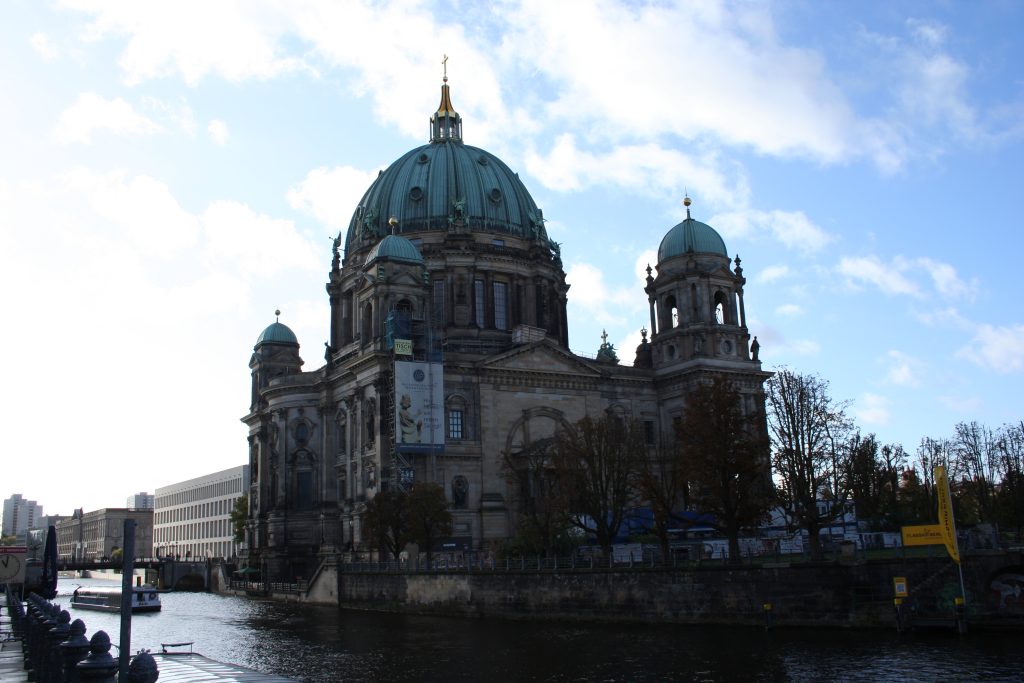
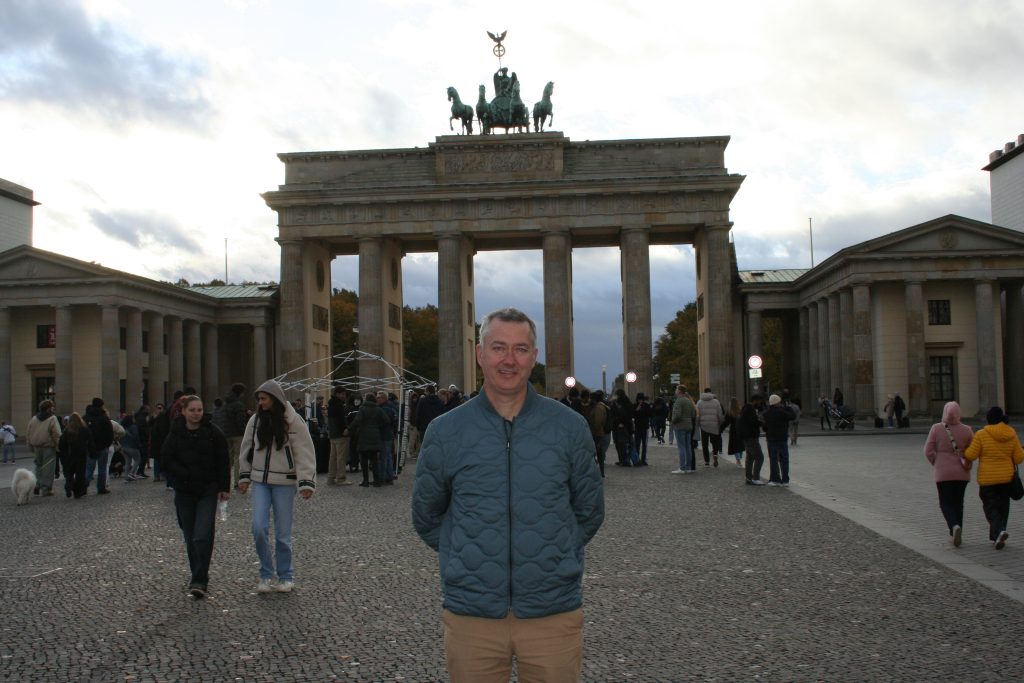
To become briskly acquainted with Berlin, we took a tour of the city and sampled its culinary and cultural palette. On the tour we tried döner kebab, currywurst, Berliner Weisse, Schweinshaxe, and Berliners (Krapfen). Though it may have been an irregular sampling of fast food, hearty dishes, and drinks, it was nothing short of incredible. In addition to the food scene, we explored notable places, including the Haus Schwarzenberg, the Lustgarten, and the Spree Canal.
The people of Berlin have an incredible mingling of cultures that seeps into their food, and they take their art extremely seriously. Each city block and tunnel served as a blank canvas for the inevitable street art piece, and that isn’t even mentioning the places that were designated purely for artwork.
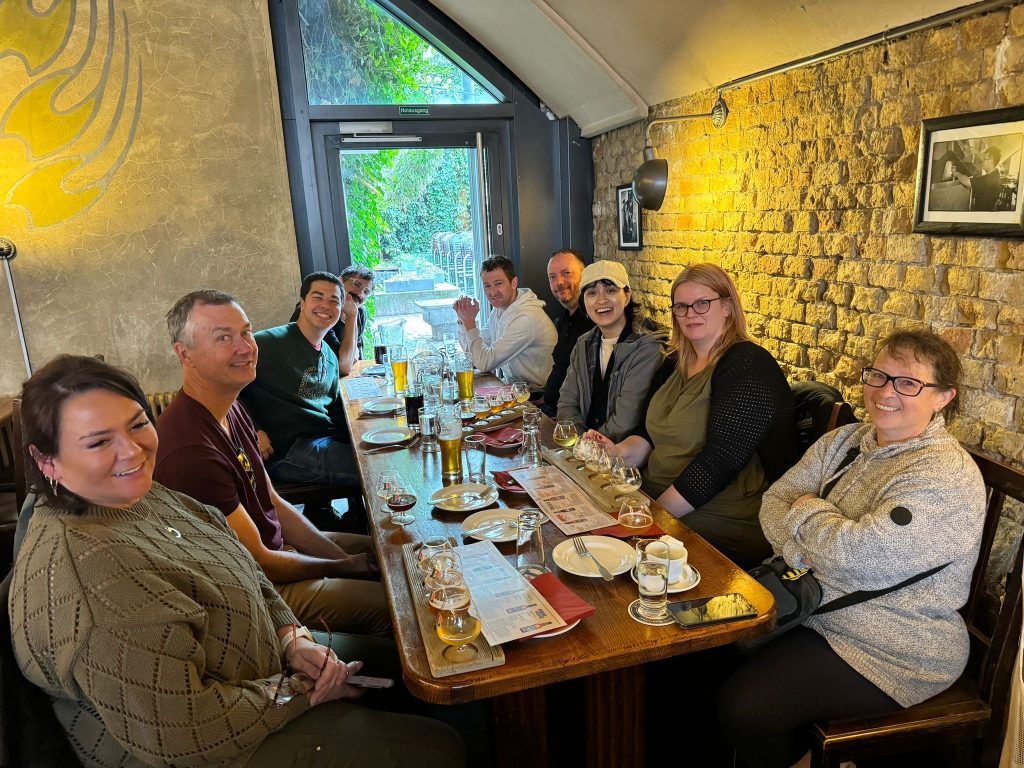
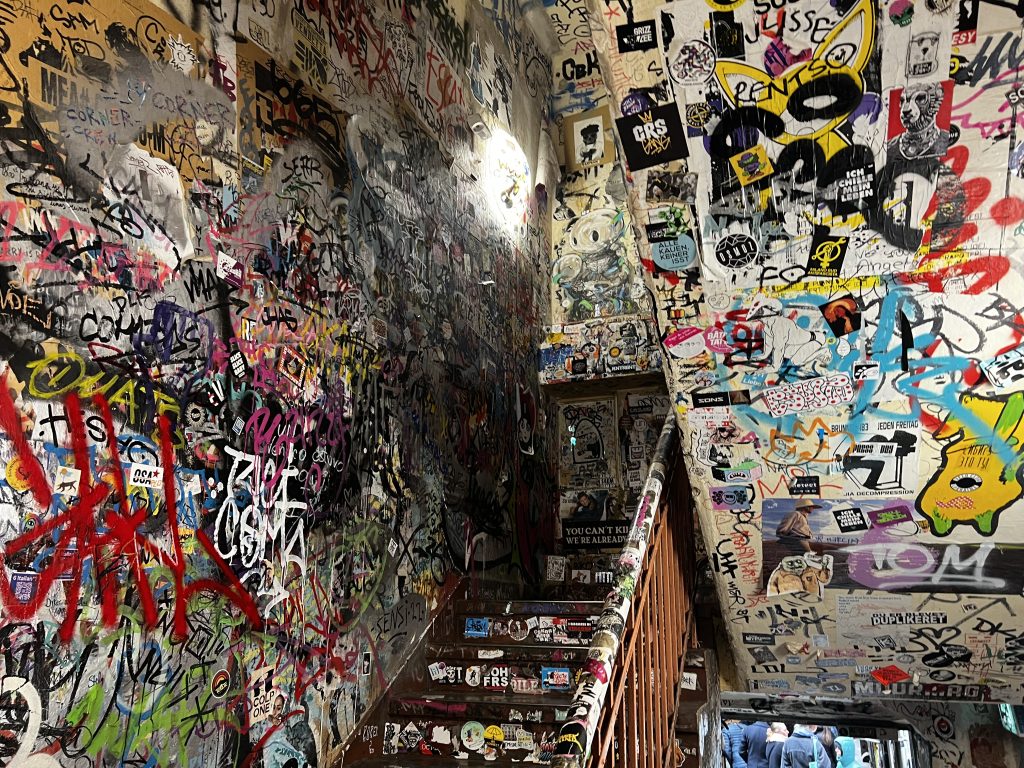
Intending to observe history, my father and I traveled to Mitte, Berlin’s central borough, to view several monumental pieces: the Brandenburg Gate, the Berlin Wall, the Berlin TV Tower, and Checkpoint Charlie. Grueling isn’t a strong enough word to portray the profound sense of disgust that many of these sites evoked. The realization that the documented atrocities I saw only happened a short while ago was not a pleasant one. George Santayana’s words hold striking relevance here: “Those who cannot remember the past are condemned to repeat it,” and it is so important that people never neglect the gravitas of these events and similar ones that have happened all over the world.
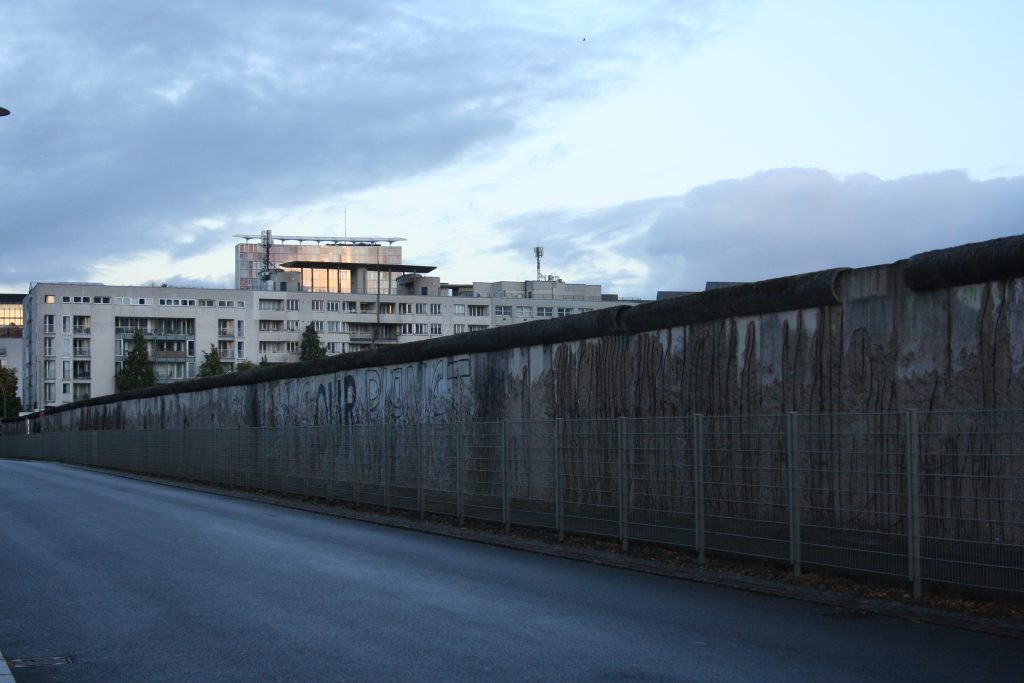
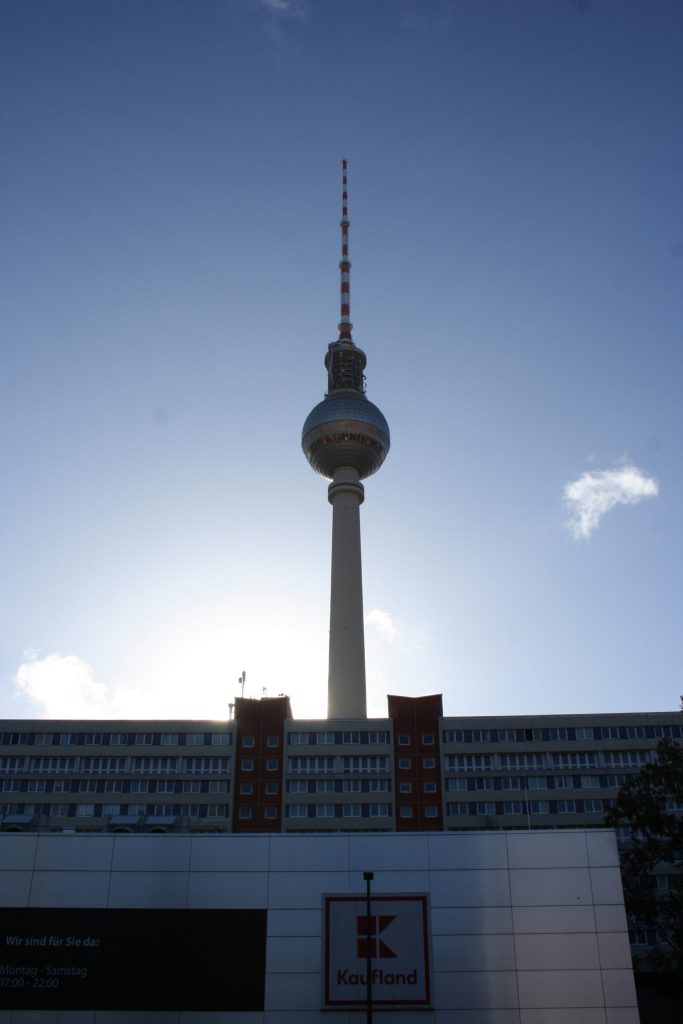
Potsdam
Eager to further explore Germany’s history, we took a day trip to Potsdam through a tour organized by my father’s German school. We rode a train from the center of Berlin and arrived at Sanssouci Park, home to the Sanssouci Palace, built by Prussian King Frederick the Great.
We began at the Neues Palais, a building with a history that stretches from its construction at the end of the Seven Years’ War to its pillaging by the Soviet Army during World War II. Inside, the walls were lined with decorative stones and silk. After exploring the palace, we headed east, admiring the neatly arranged, tree-lined walkways.
As we strolled toward Innenstadt, a residential area of Potsdam, we stumbled upon the windmill at Sanssouci Palace, where I tried a loaf of bread baked on-site. It may have been the best bread I have ever eaten, and if you ever find yourself in Potsdam, I highly recommend trying it.
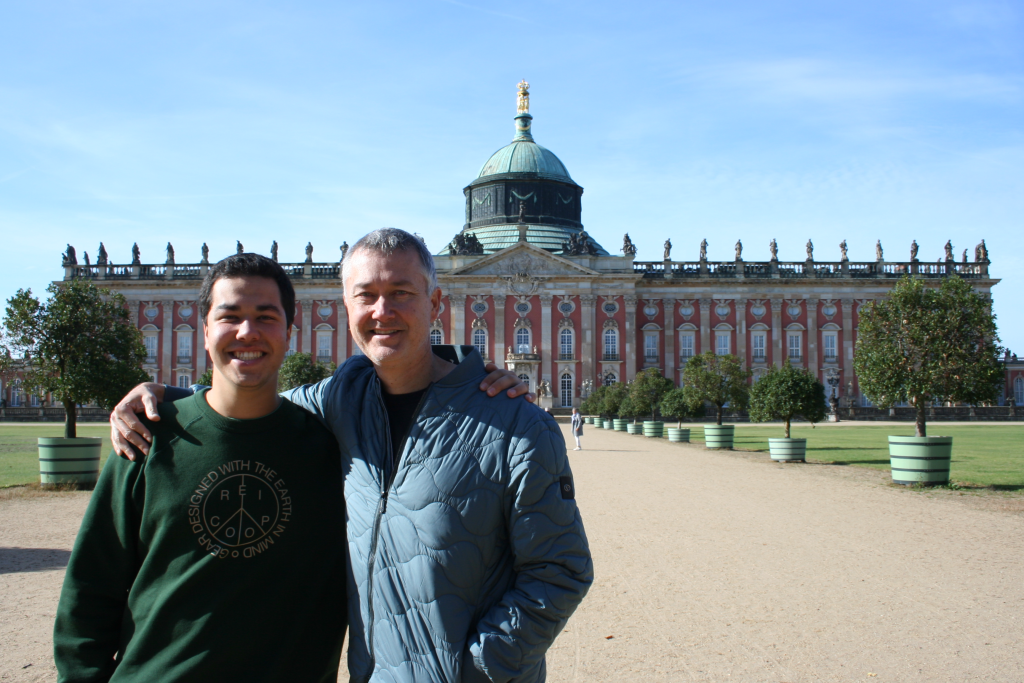

After some more walking, we came across Schlosspark Sanssouci, home to a collection of gardens. The greenhouses on each tier complemented the scenery beautifully. One of the most intriguing features I still can’t quite get over is the ‘potato grave.’ Atop the highest tier of the park, I found a peculiar stone covered in potatoes and roses, the grave of King Frederick II, the ruler who helped introduce potatoes to Prussia in the 18th century.
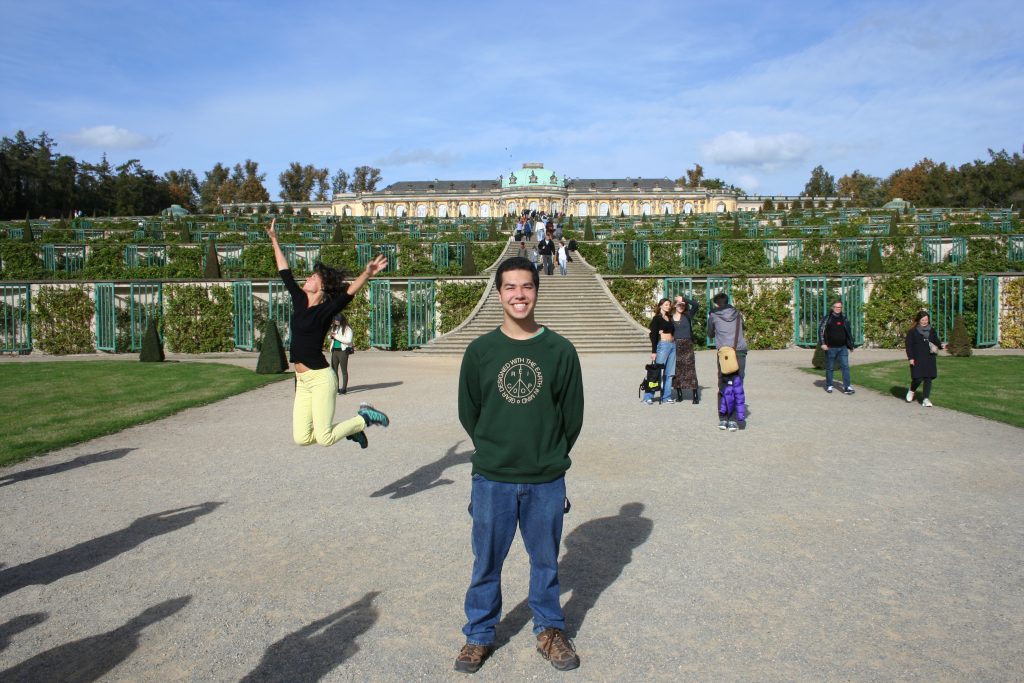

As we left Sanssouci, we passed through Luisenplatz, a gorgeous historic square, and under a bright cream-colored arch, the Brandenburg Gate of Potsdam, where we first laid eyes on Innenstadt. Our tour group briefly split up for lunch. Being in Germany, I couldn’t pass up the chance to have a döner kebab, one of my favorite dishes.
After lunch, as we strolled through town, we encountered the Dutch Quarter, a replica of traditional Dutch homes with a fascinating history. King Frederick William I invited craftsmen from the Netherlands to Potsdam, and to make them feel at home, he constructed these two squares of Dutch-style houses. It perfectly fits into the varied architecture throughout Potsdam that makes the town a melting pot of aesthetics.
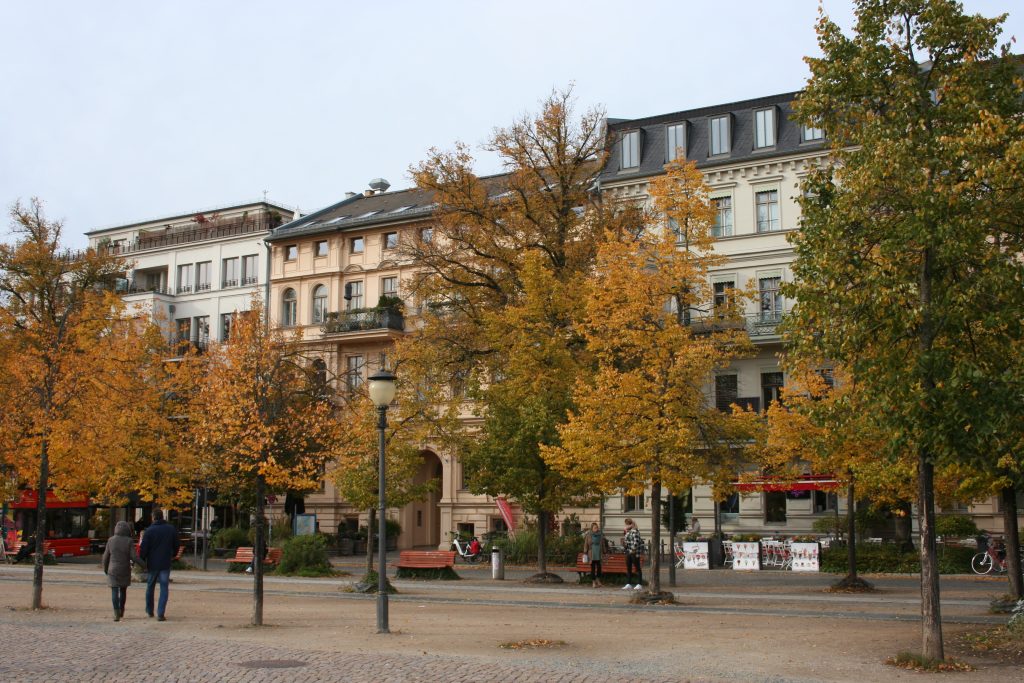
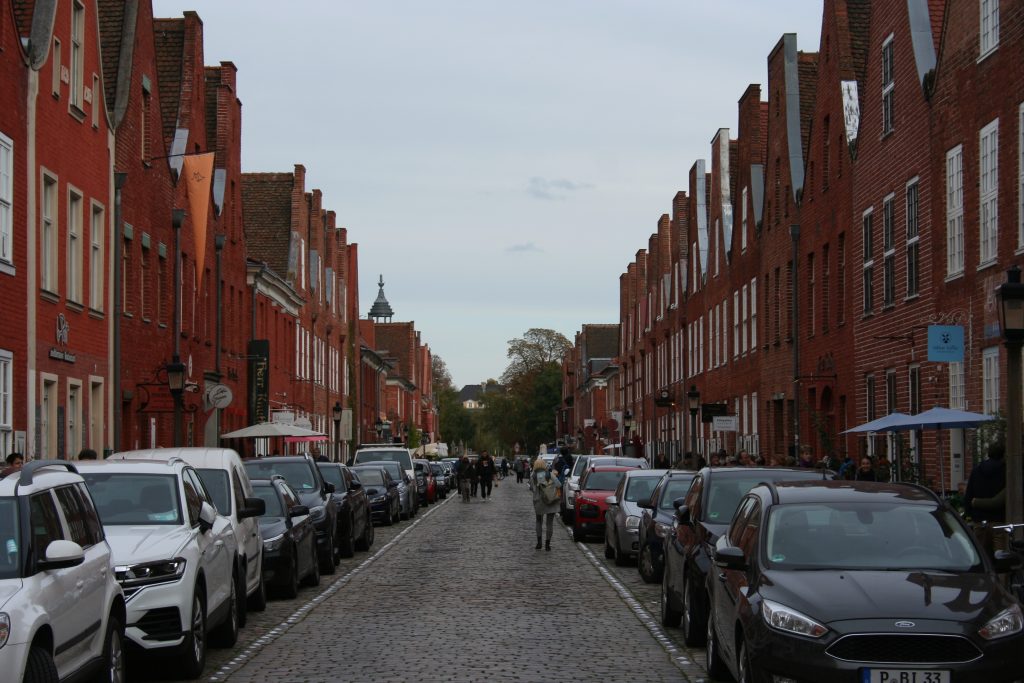
The day finished with a walk through Old Market Square. There, we attended a sermon in the historic St. Nicholas Church and had the pleasure of examining the intricate details of the Alter Markt Potsdam obelisk. As a group, we settled in the chilly courtyard of the City Palace, where our tour guide explained the political dynamics Germany faces. Naturally, our conversation turned to World War II and its impact on Potsdam, leading to a detailed discussion of German history and policy that has shaped the nation today. Hearing a German opine on history and its lasting impacts in this important and relevant setting was a powerful experience.
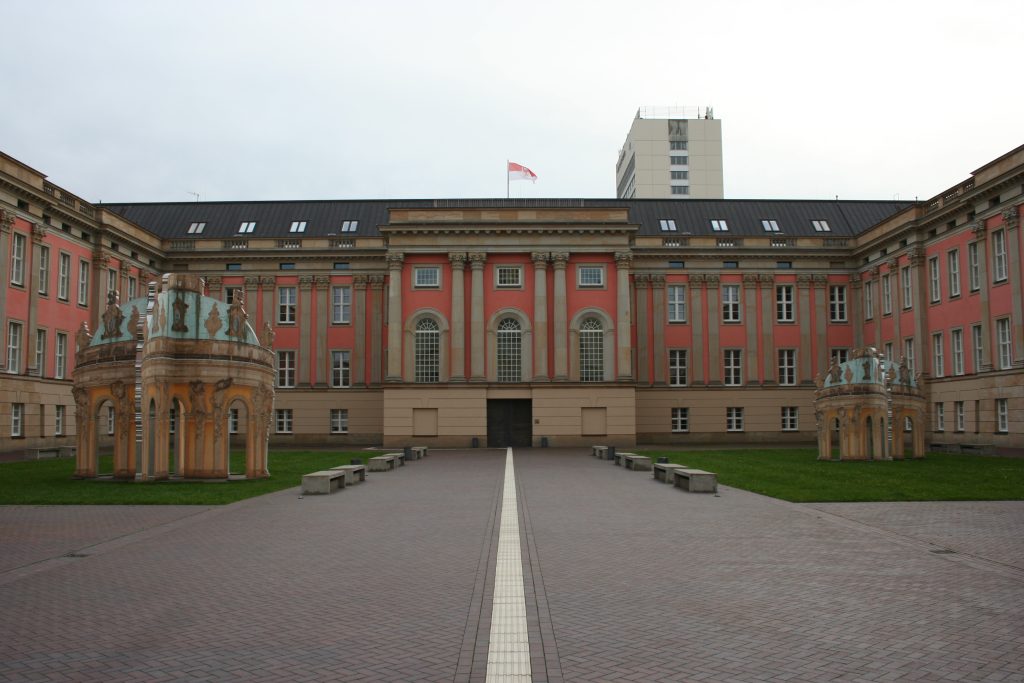
Berlin Pt. 2
On my last day in Berlin, my father and I decided to have lunch at a traditional German restaurant. We stumbled upon a place that perfectly met our criteria: Dicke Wirtin. This fascinating, orange-colored establishment, adorned with classic mugs, portraits, and intricate chandeliers, has cemented its place in Berlin’s history by enduring numerous tumultuous decades. I decided on Matjes Hausfrauenart, a cold herring dish served with fried potatoes and a staple of German cuisine, while my father chose a plate of Harzer cheese accompanied by red onions, goose fat, cucumber, and bread.
As evening fell, we traveled to the Stasi Museum, a seemingly simple, eight-story concrete building with a horrific past. Once the headquarters of East Germany’s secret police, the interior is every bit as eerie as its reputation suggests. The museum’s rooms, formerly operational areas for the Stasi, detail the agency’s rise, outline their invasive schemes, and showcase numerous contraptions they once employed. I didn’t feel compelled to linger longer than necessary, but I’m grateful for the opportunity to have visited.
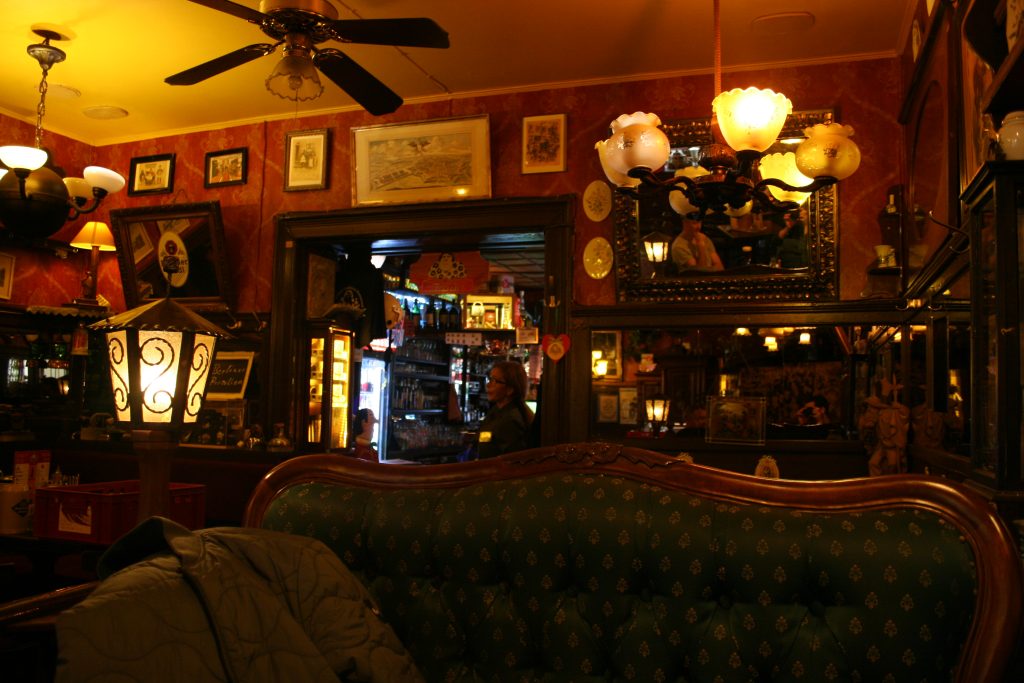

Madrid
Arriving in Spain, I transitioned from cold to hot weather yet again. I donned my shorts and t-shirt and set out to experience the culture.
Since the summer camp where I work has a large international presence, especially from Spain, I reached out to a fellow counselor, Pablo, who generously offered to give me a full-day tour of the city.
Our morning began with a stroll down the Gran Vía and several smaller side streets, during which Pablo shared the history behind some of the city’s notable attractions. We then arrived at La Escondida, an old café where we enjoyed porras and churros paired with Castilian hot chocolate, a breakfast I wish I could have every day. Afterward, Pablo led me on a grand loop around central Madrid. We marveled at the Royal Palace, the Palacio del Senado, the Edificio Carrion, and countless other historically significant structures.
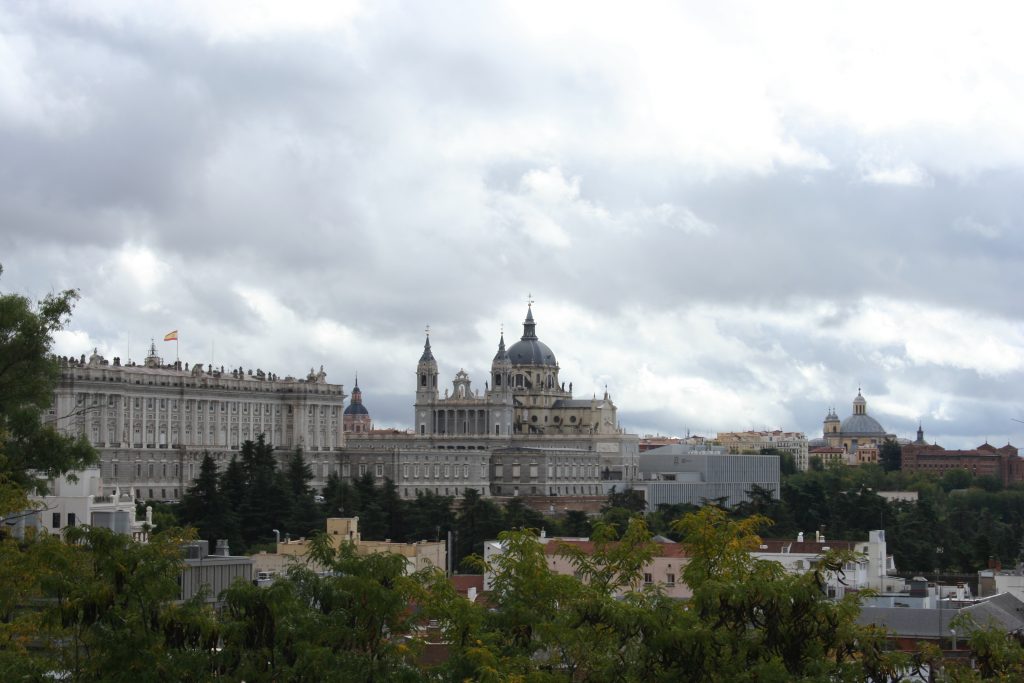
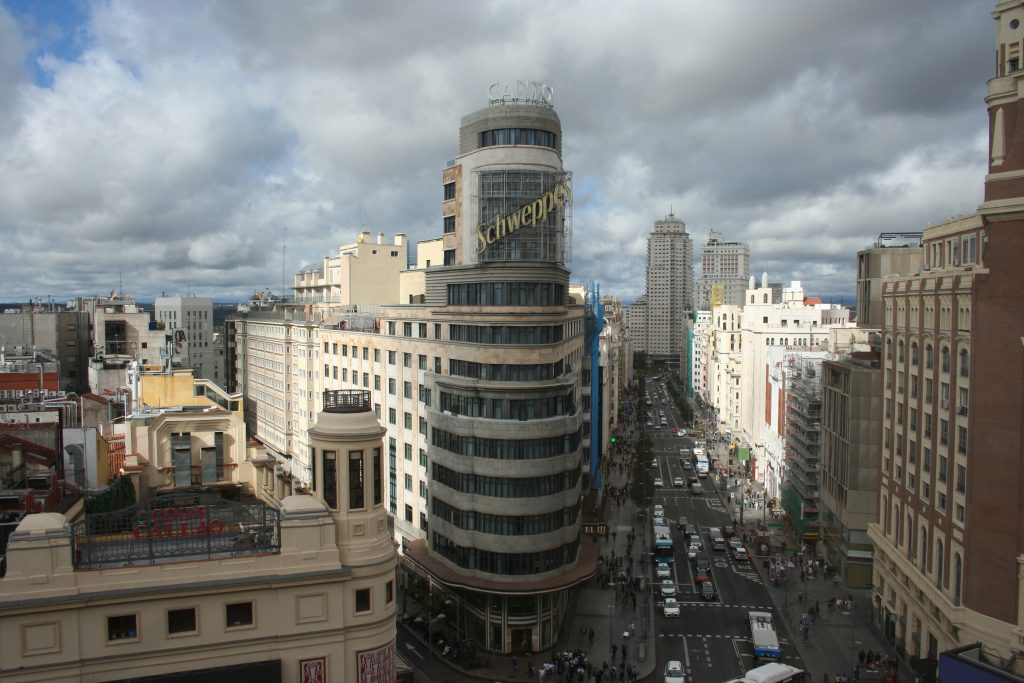
After walking several miles, we finally settled for lunch at a spot that Pablo has been frequenting since his teenage years. The tapas bar, Sidrería El Tigre, operated on a unique concept where we would buy drinks, and in return, they served us generous portions of tapas: croquettes, tortilla, jamón, and more! I entered famished and left feeling like I’d eaten enough to last a lifetime.
Our day trip continued with a stroll through El Retiro Park. This gorgeous park featured meticulously designed gardens, palaces made of glass and colorful stones, and even roaming peacocks. As someone who lives and breathes plants, this was a dream come true. The sheer abundance of vegetation and the variety of species were mind-blowing.
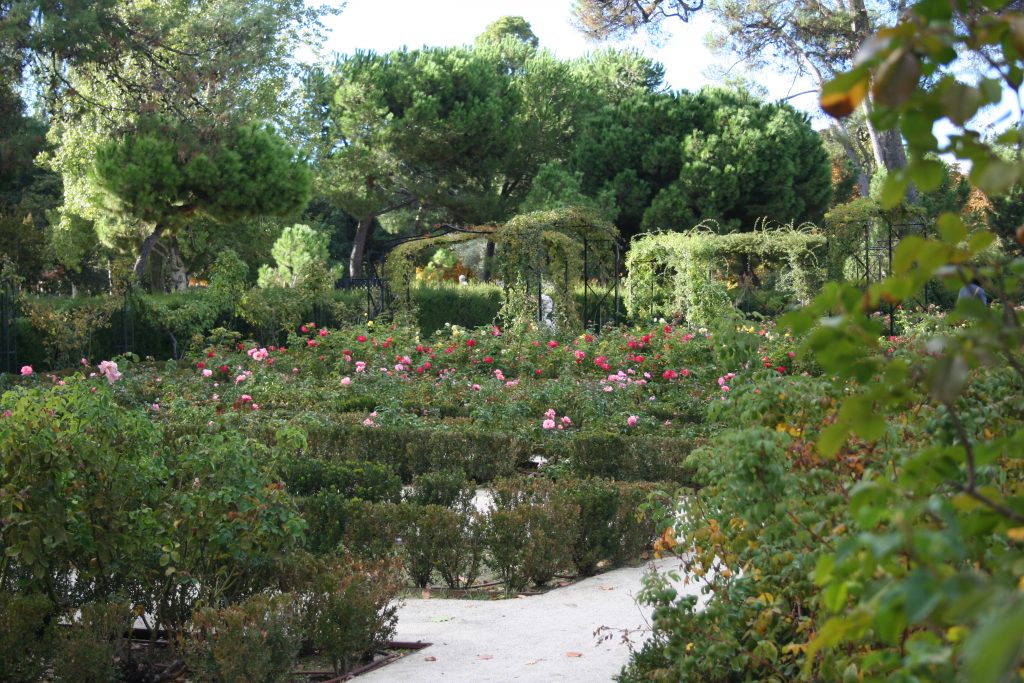
At night, Pablo returned with his car to take me on another tour of the city, this time beneath the dazzling city lights. We began at Plaza Mayor, where I was introduced to Bocadillo de Calamares and Patatas Alioli, a simple yet delicious potato dish. Grabbing dinner at 10 PM amid the lively hustle of the plaza was an amazing experience: children played in the square, adults laughed over drinks, and the lights beautifully illuminated the surrounding architecture.
After dinner, we drove through the greater Madrid area, taking in the city under the night sky. With skyscrapers outlining the horizon and flashy signs dotting the darkness, I found myself wishing I could explore this expansive city even longer, but I remained grateful for every moment.
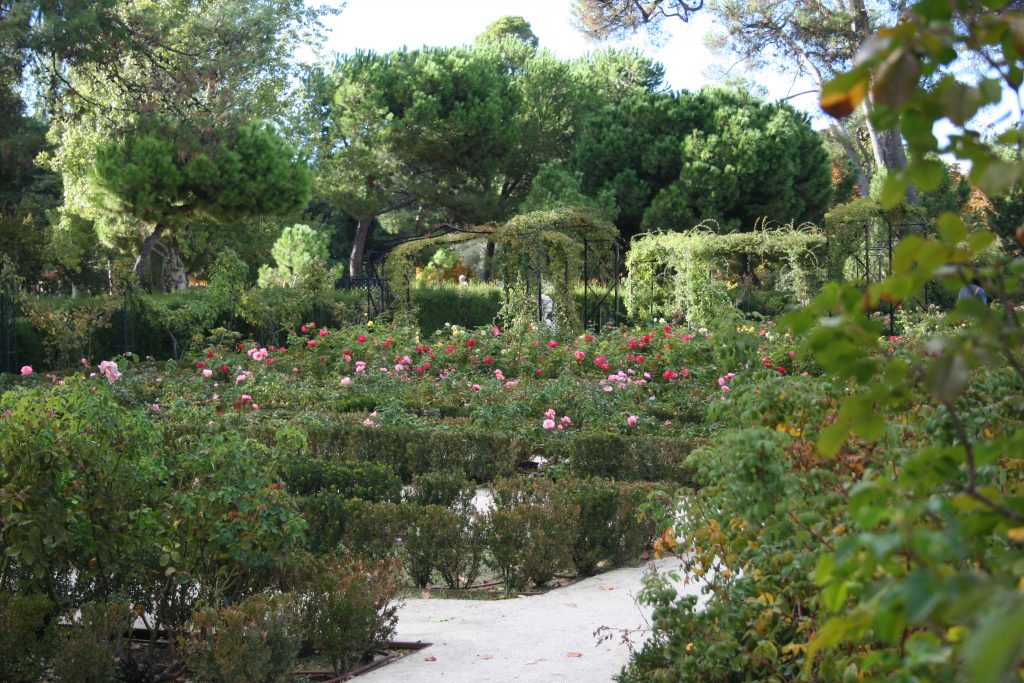
The next morning, I was off to the northeast of Spain: Barcelona.
Barcelona
“2 up, 4 right, 2 up.”
That was how my thoughts unfolded each day. For those unfamiliar with Barcelona’s layout, the city is designed in neat, uniform blocks with truncated corners, locally known as manzanas. Originally created to reduce political demonstrations (a fascinating read if you enjoy history and politics), these blocks also make navigation incredibly simple. With just an occasional glance at Google Maps, I easily found my way around.
In a city renowned for its phenomenal architecture, the works of Antoni Gaudí were impossible to overlook both for their grandeur and their sheer number. From La Sagrada Familia to Casa Vicens and Casa Batlló to Casa Milà, his masterpieces dotted the cityscape. I planned my walks specifically around these landmarks, marveling at their fantastical designs.
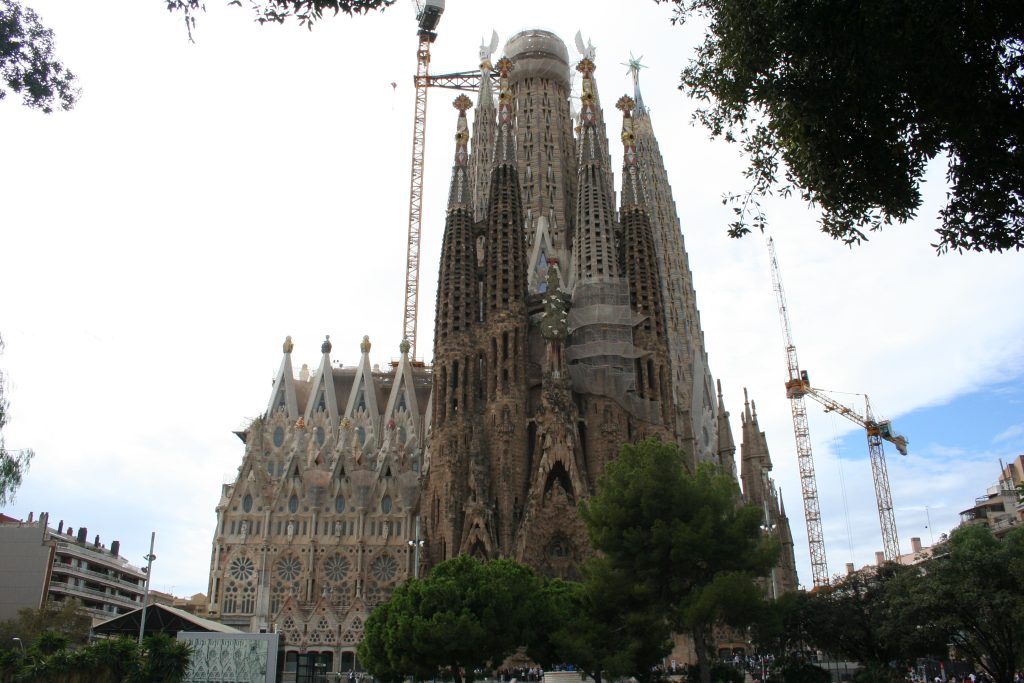
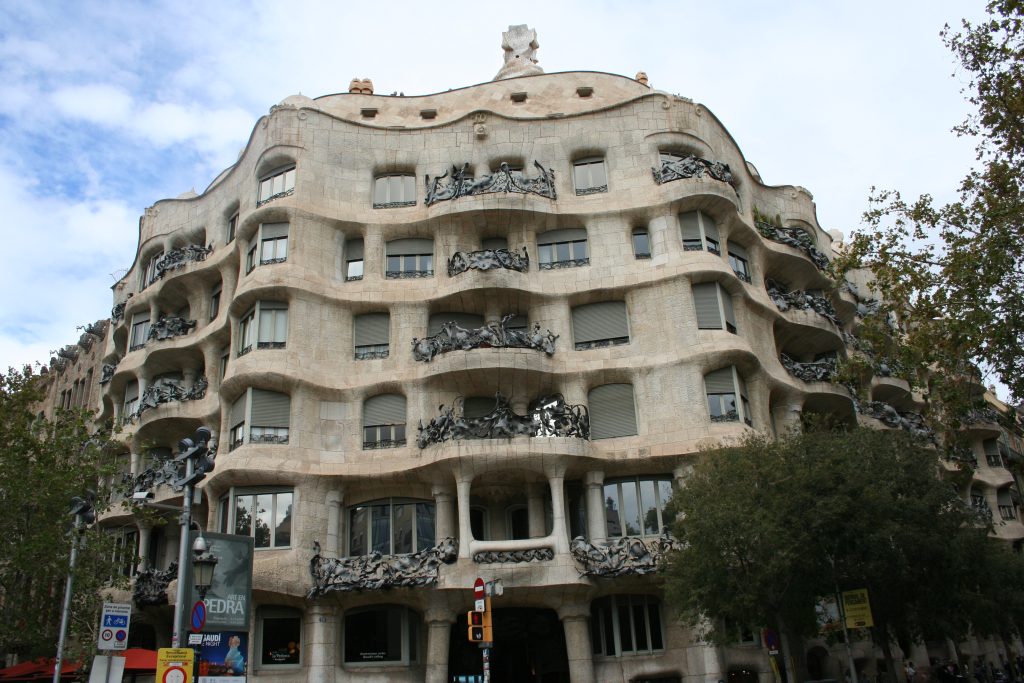
Though most of Barcelona’s downtown is relatively flat, the city’s northwest contains a hill offering panoramic views of the entire area. Climbing it and seeing the perfectly organized manzanas from above gave me a new appreciation for how thoughtfully designed the city was.
I made it a goal of mine to immerse myself in the heart of Catalan cuisine. As the capital of Catalonia, Barcelona brims with dishes rooted in fresh, bold flavors, many of which feature ingredients I adore: fish, garlic, peppers, and olive oils. Each day brought a new culinary experience: bacalao a la llauna, a traditional dish of baked fish with tomato, garlic, and paprika; fideuà, a delightful seafood-based noodle dish similar to paella but unique in its use of short, thin pasta; and Catalan-style cannelloni, a flavorful twist on the Italian staple, often stuffed with meats or vegetables and smothered in creamy béchamel sauce.

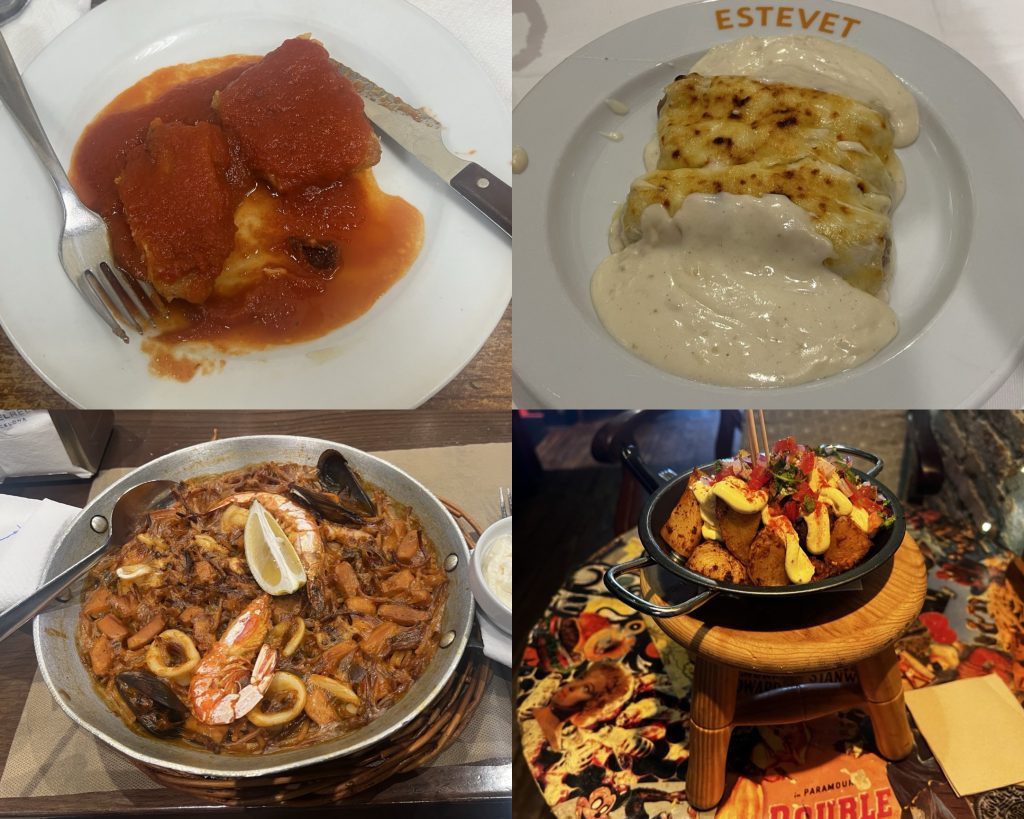
When my time in Barcelona came to an end, I packed up and headed north to my next destination: Bilbao.
Bilbao
Instituto Hemingway
In Bilbao, after some time away from traditional classes, I found myself back in the role of a student—this time, studying Spanish rather than STEM. Each morning, I walked down a main city road to reach my school. Along the way, I absorbed the scents of numerous kafetegiak (the Basque word for cafeterias), Moroccan restaurants, and fruterías. Upon arriving at the school, I would press the entry button to the building, be greeted by a familiar “bzzz,” and then ascend the stairs to my class. Even though the lessons were labeled “immersion,” I wasn’t entirely prepared for what I had signed up for.
Class always began with a simple dialogue exchange:
“¿Qué tal?”
“¡Muy bien!”
From there, things progressed. I was determined to reach a point where I could sit and understand the conversations, and over time, I did. My teacher, Rafa, spoke in a way that made me excited to learn. This wasn’t a return to a middle school Spanish class with printed worksheets; it was genuine preparation for navigating Spanish-speaking cities without relying on an external translation device.
My class ran for three and a half hours with a thirty-minute break. During each break, I would venture out into the city with two friends from class—Lena from Belgium and Ayoub from Morocco. I developed a routine of purchasing a café con leche and some pintxos (pronounced “pinchos”). For those unfamiliar with this culinary delight, pintxos are slices of white bread topped with a variety of ingredients, ranging from seafood to an assortment of vegetables.
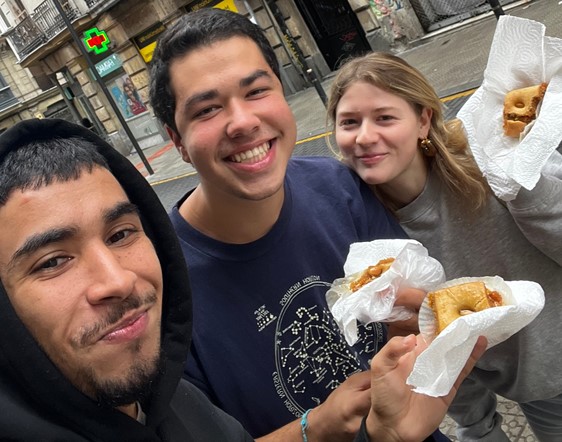
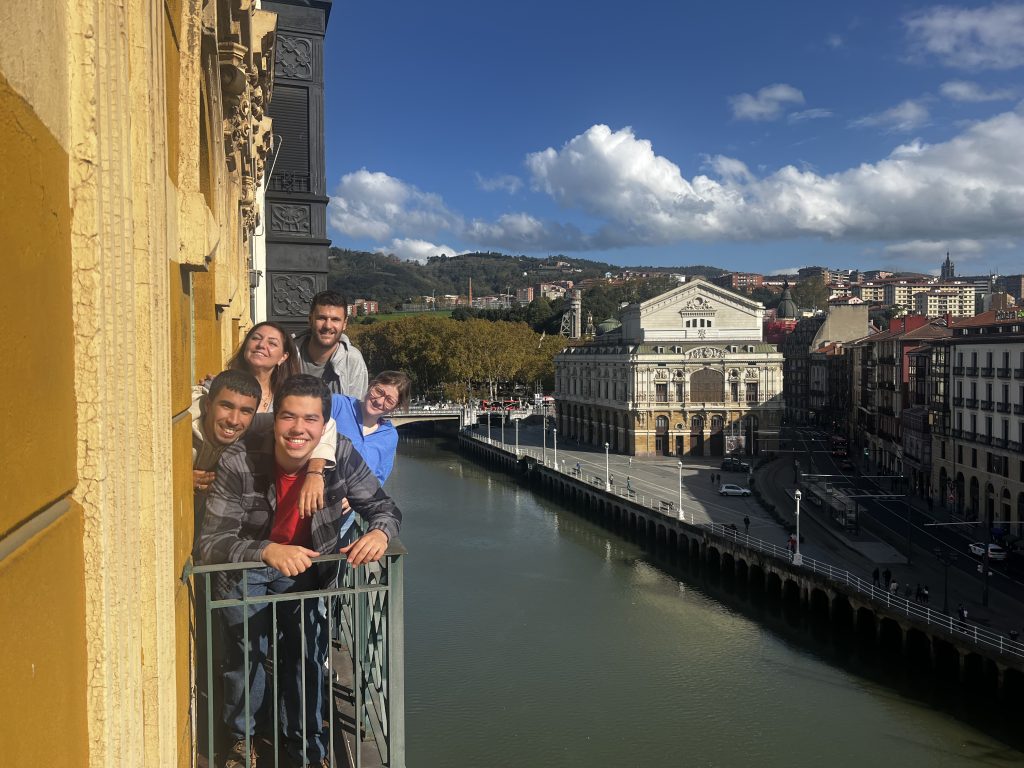
The Sustainable Permaculture Initiative
Upon finishing my Tuesday and Thursday classes, I’d gather my belongings and hop on the train for a thirty-minute journey south into the Basque Country, an autonomous community in northern Spain that also includes Bilbao. There, I volunteered with a sustainable permaculture initiative. When I arrived at the farm, my volunteering instructor, Txuma (pronounced “Chuma” in Basque), would greet me and assign a task. Side by side, we planted, harvested, and completed various duties. Unlike the sprawling farms I’d seen elsewhere, Txuma’s operation emphasized extreme efficiency, arranging plants in tight interlocking patterns that maximized space and minimized waste.
With Txuma speaking Spanish and Basque, as well as minimal English, it was the perfect opportunity for me to improve my language skills. We conversed, my broken Spanish limiting me, and I often filled in the gaps with exaggerated hand motions. At that point, my Spanish vocabulary for fruits and vegetables was probably my strongest asset—lechuga, acelga, col, pera, higo, calabacín—you name it! My favorite moments on the farm were the opportunities to sit quietly with my thoughts. The only real sounds were the stomping on wet soil and the occasional passing train. As I worked, I enjoyed the cool breeze on my skin and the pleasant aromas of various plants drifting through the air. After a stretch of fast-paced, hectic travel, this peaceful interlude was exactly what I needed.
The following week, I wasn’t alone for long. Henriette, another student from Instituto Hemingway, made the trek from Germany to Bilbao and began joining me on my trips to the farm.

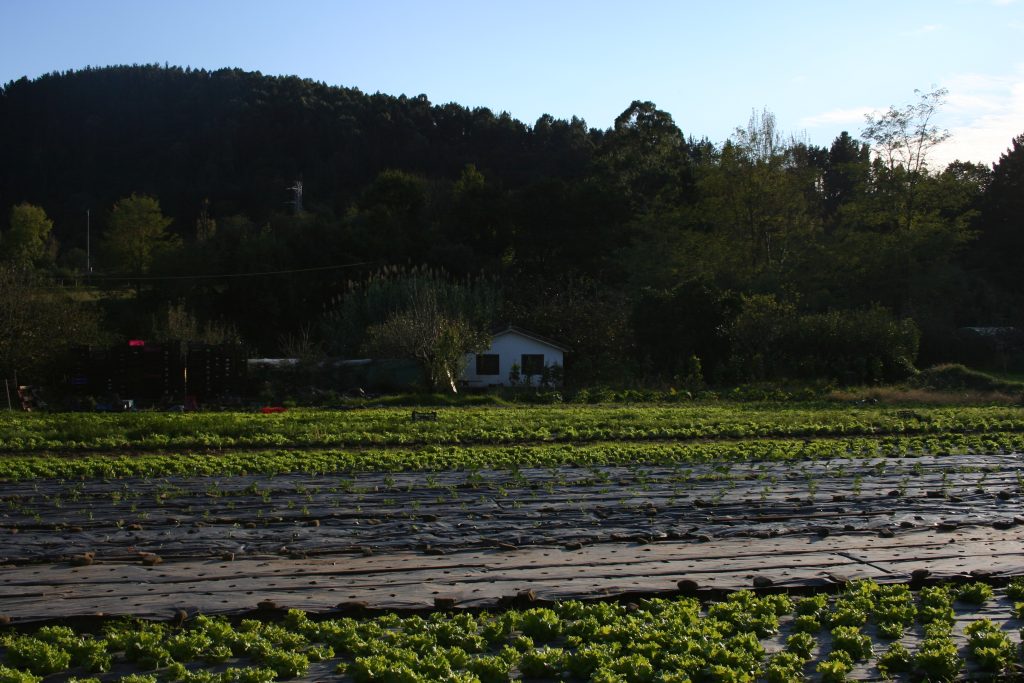
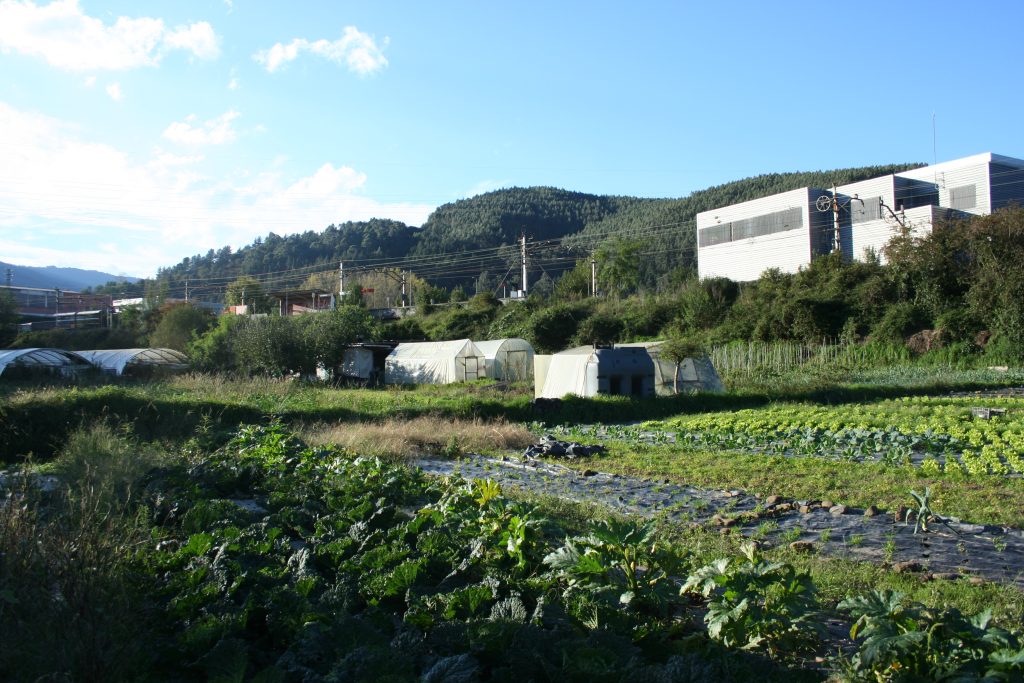
Bilbao’s Beauty
The ability to gaze upon a city as though you are watching it in a snow globe is something unique. Bilbao’s topography, set on a plain between mountains, offers a view down into the city after a short ride on a subterranean funicular, and naturally, that is what I found myself doing when the opportunity arose.
Architecturally, Bilbao is fascinating: a convoluted silver collection of curves comprising a museum, a mirror-paneled government building, an entire city block composed of a singular, colorful multi-material edifice, and countless other unorthodox structures. A walk around downtown after class was never dull. Each day I would discover a new, fascinating building with a design I couldn’t possibly dream up.
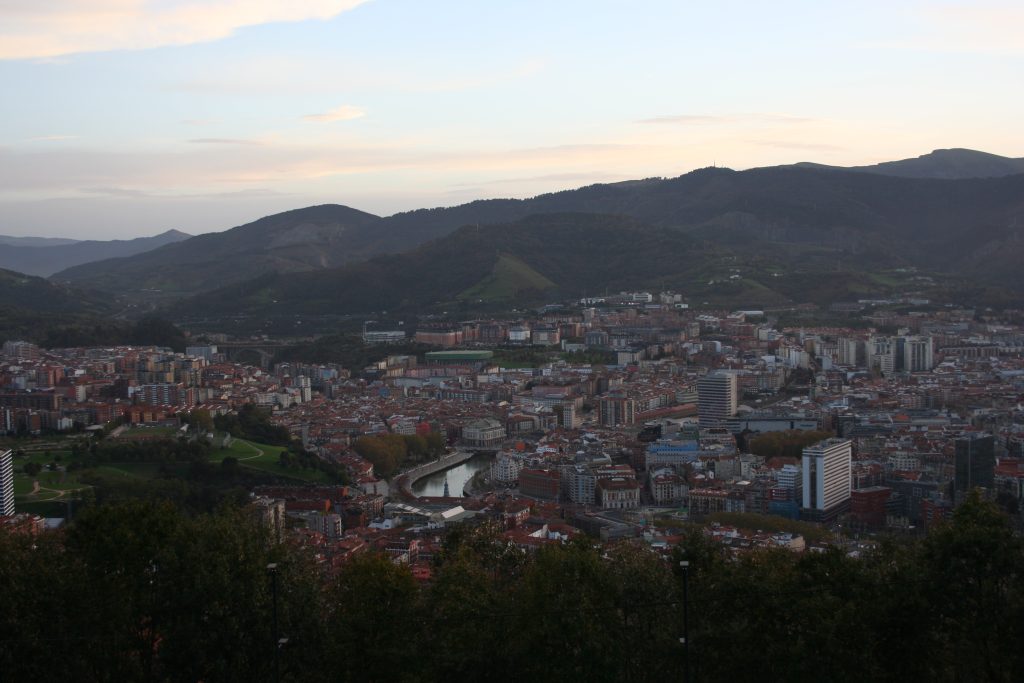
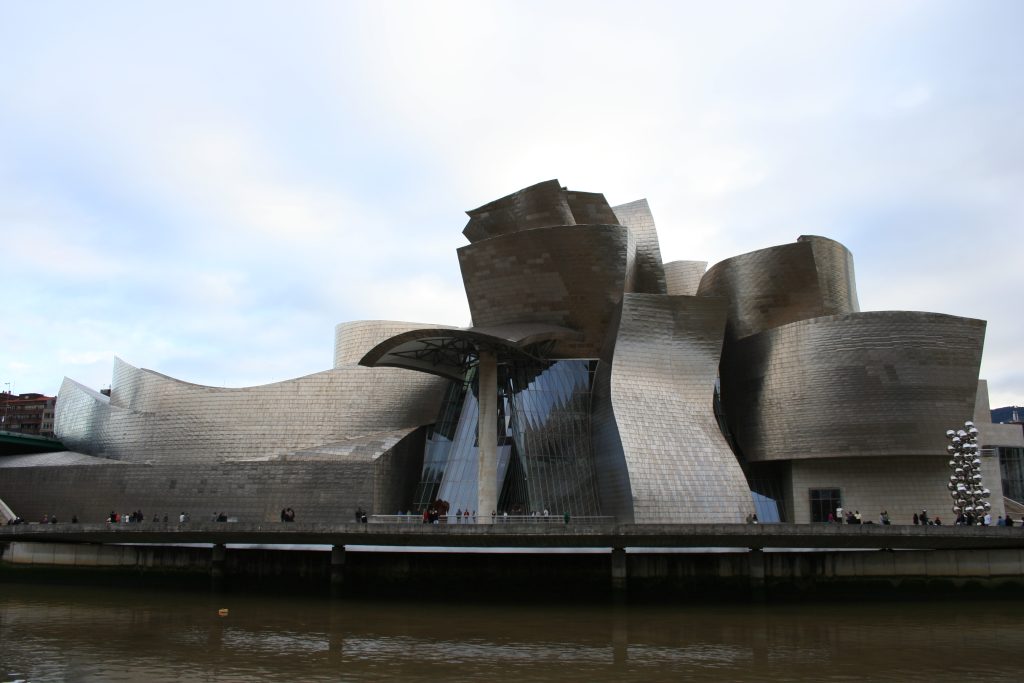
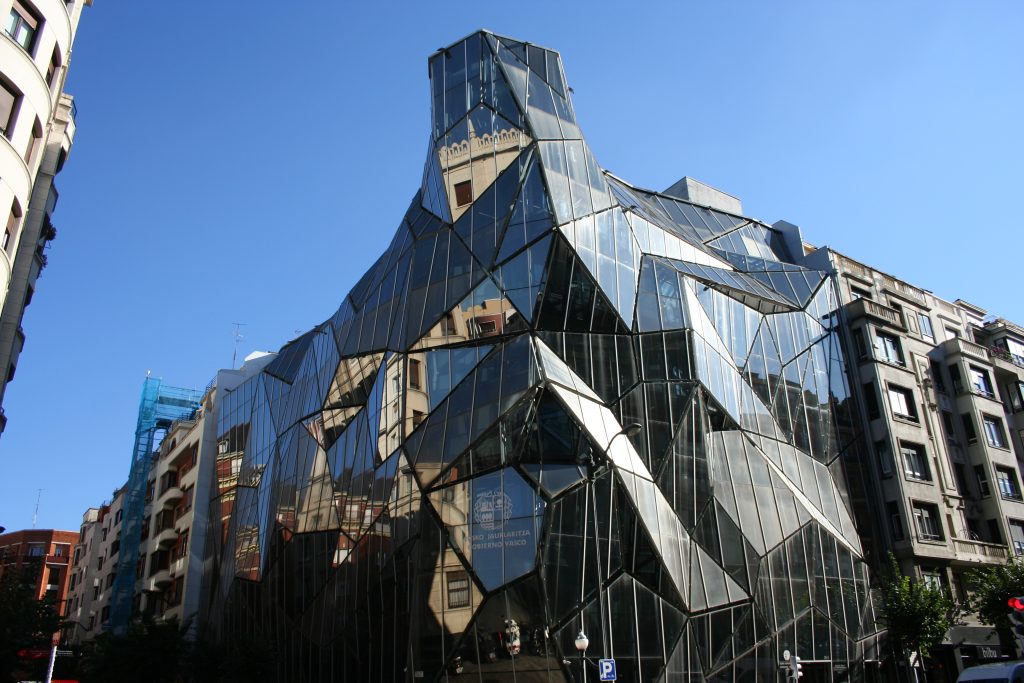
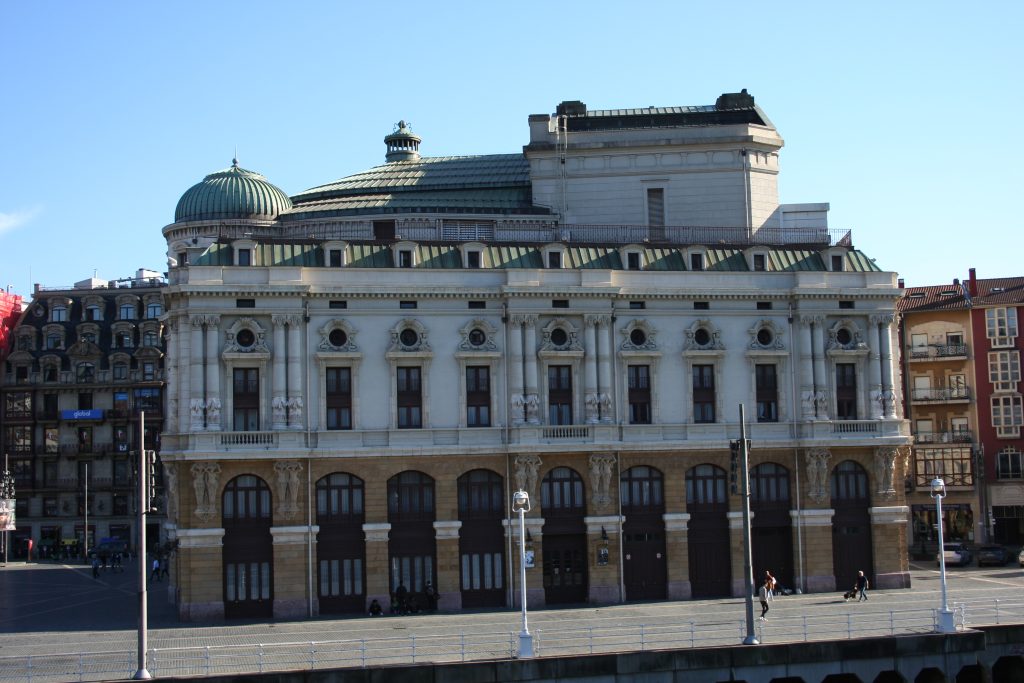
San Sebastián
San Sebastián shatters the idea that “beauty is in the eye of the beholder,” because its breathtaking beauty is universally apparent to all who visit.
I traveled to this astonishing city with my classmate Lena and fellow farmworker, Henriette. After a brief fiasco at the bus station, we managed to catch our ride. If you’ve followed my travels, you’ll know my deep appreciation for food. Naturally, the moment we arrived, I made a beeline for a crab pintxo. Despite San Sebastián’s reputation as one of Spain’s pricier destinations, its famous pintxos remain surprisingly affordable, with these delightful bites scattered throughout the city. The city’s culinary excellence extends far beyond pintxos, too; I savored its signature patatas aioli, crispy ham croquettes, and perfectly layered tortilla de patata.
As extraordinary as the food was, the city’s sheer beauty was even more striking. San Sebastián is a masterpiece where nature and architecture meet. The sea contrasts the city’s decorative homes, while its crescent-shaped bay is framed by three stunning beaches and cascading houses. This charm is no accident: the city once served as the summer residence for the Spanish Royal Court, and its splendor still lingers to this day.
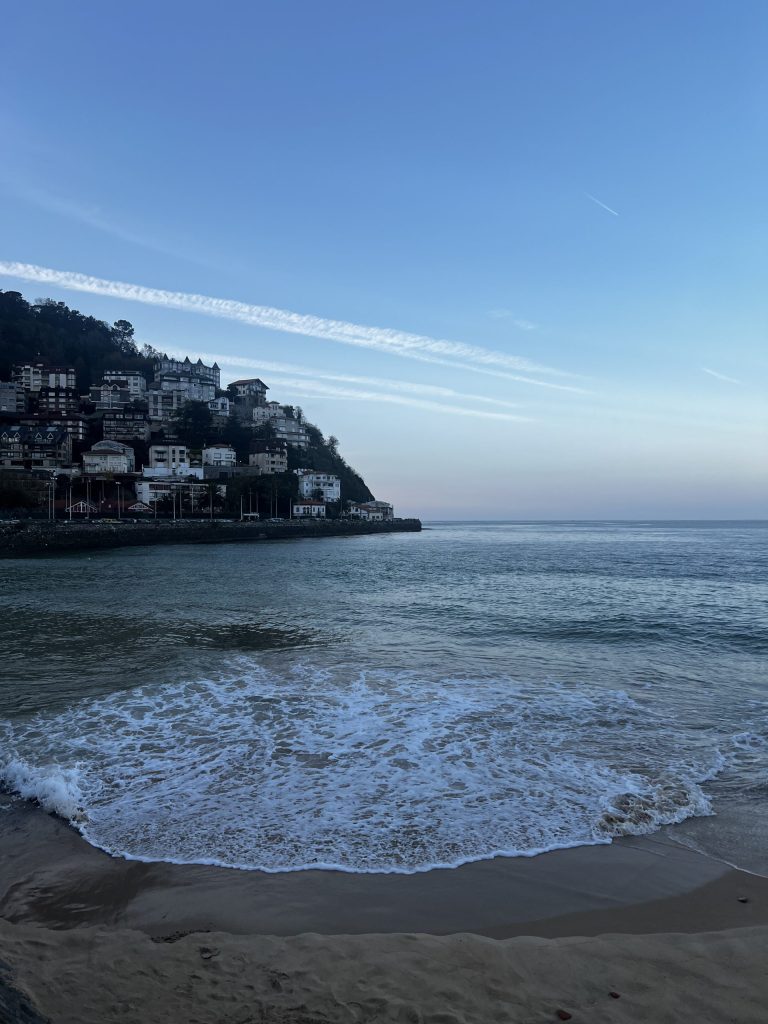
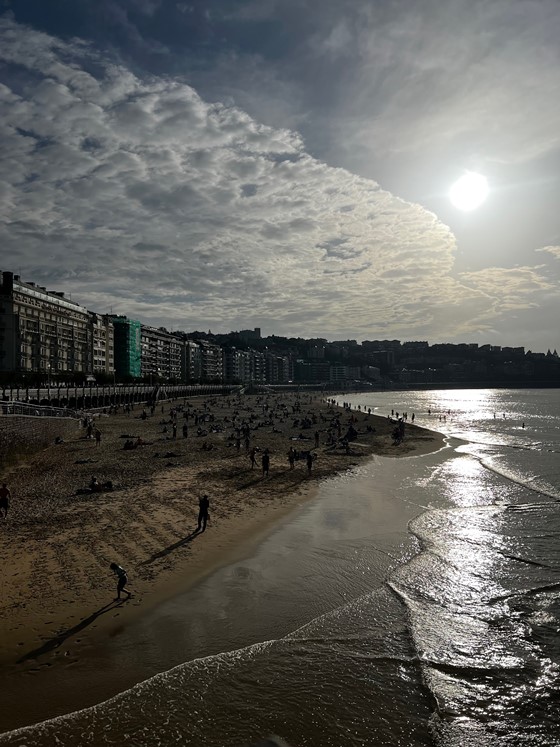
As the sun began to set, we decided to trek to the top of the hill for an unparalleled view of the Bay of Biscay and Isla de Santa Clara. The wait for the Funicular Monte Igueldo was far too long, so we opted for the winding hike up the residential roads instead, a choice that proved to be perfect. Along the way, we passed stunning homes, pausing often to watch the sun slowly dip into the sea.
The walk back down was even better. The tiered homes along the dark waterfront glowed softly, their lights casting shimmering reflections on the water below. It was a sight so breathtaking it felt almost surreal; a perfect way to end my time in Northern Spain.
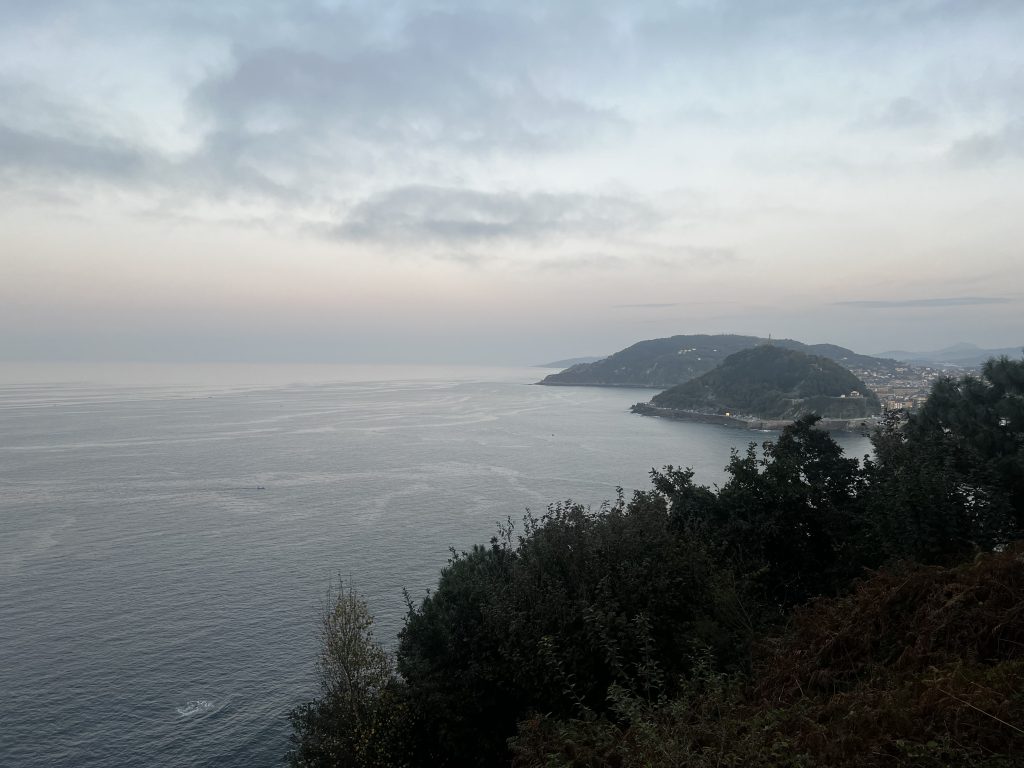

Sevilla: Hacienda El Garrotal
It was here at Hacienda El Garrotal, a farm in Sevilla, that I began Worldwide Opportunities on Organic Farms (better known as “WWOOFing”), a program that allowed me to live and volunteer on an organic farm. My days were go-go-go from morning until afternoon.
In the mornings, we would pick zucchini flowers and neatly arrange them in boxes in a harlequin pattern until we reached our quota. Afterward, we moved on to collecting a variety of produce: oranges, lemons, kaffir limes, sprouts, physalises, Jerusalem artichokes, globe eggplants, edible wildflowers, and even some of the more unusual items like Buddha’s hand.
Once the harvesting was done, we carefully packaged the produce to be distributed around Sevilla, where both people and restaurants could enjoy it. On Wednesdays, we would elect one member of the WWOOFing group to join Israel, a friend of the farm who drove the delivery route. When my turn finally came, I was thrilled! Despite the journey taking nearly five hours, the time flew by as I spent it lifting crates and climbing stairs to complete the deliveries.
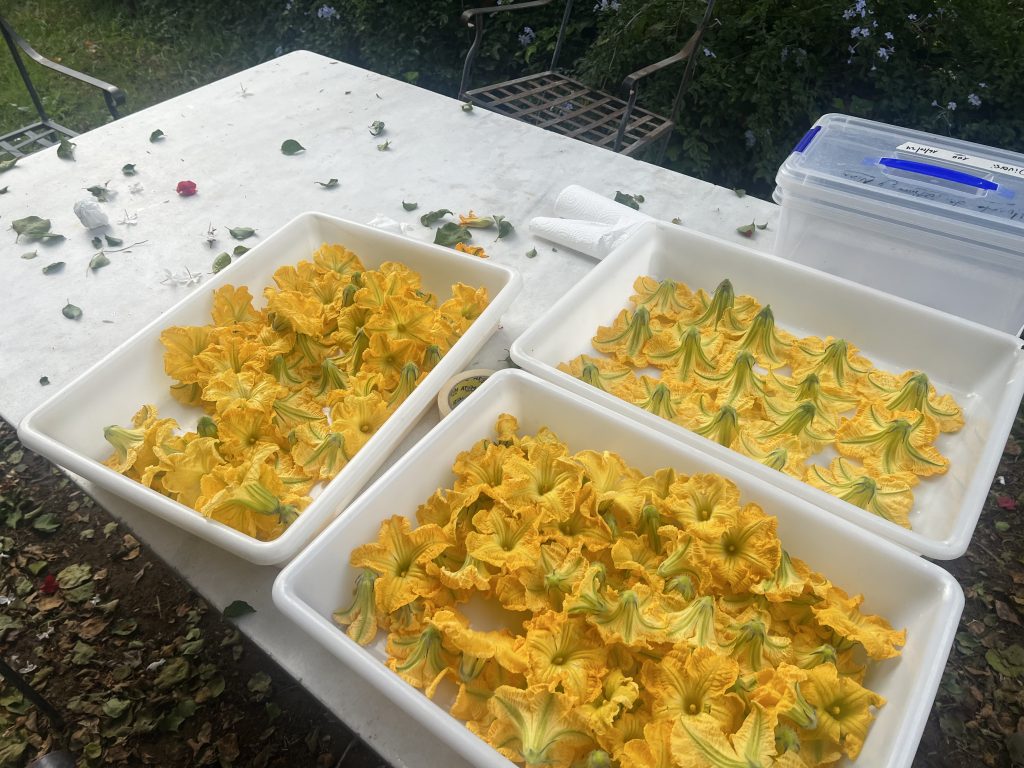
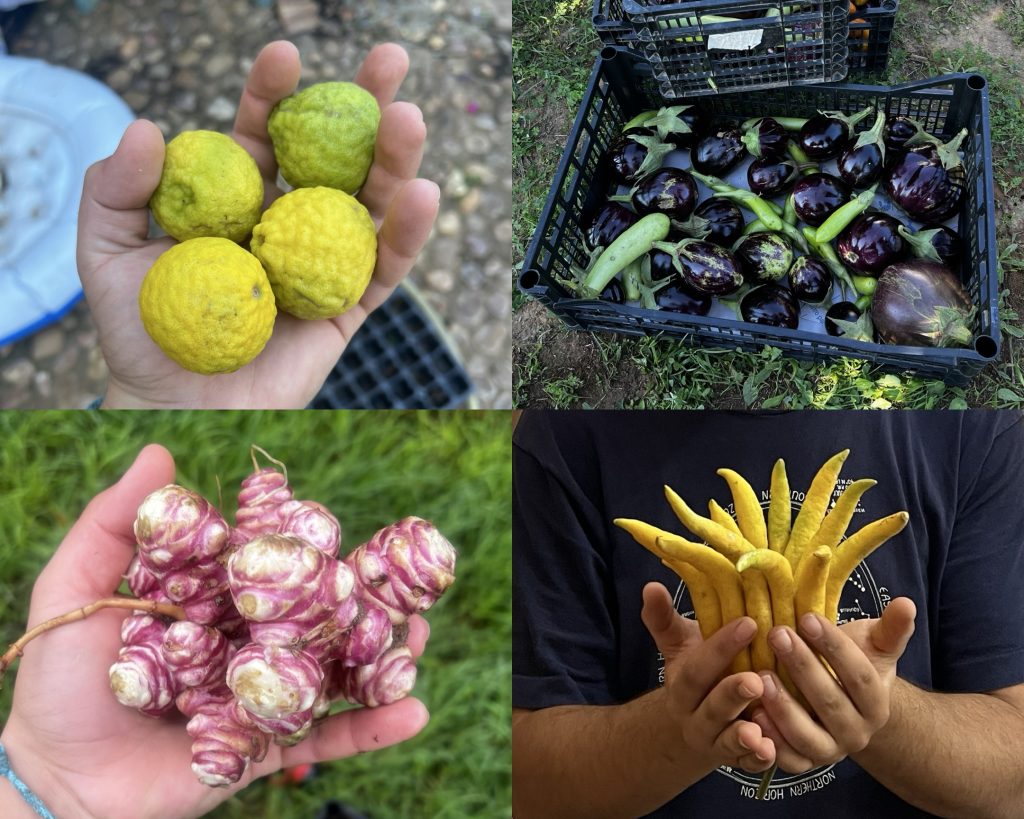
As the busier workdays wound down and Thursday arrived, we transitioned into the seminar-oriented portion of the week. On this day, we would learn a new skill or engage in a lesson. One of my most memorable experiences was venturing into the woods to forage for mushrooms with Nina, a mycologist and the mother of our WWOOFing host. We gathered and cleaned two types of mushrooms: Macrolepiota procera and Lactarius deliciosus. The forest, densely lined with wild rosemary and hundreds of year-old stone pines, provided a scenic backdrop while we scoured the area for these elusive fungi.
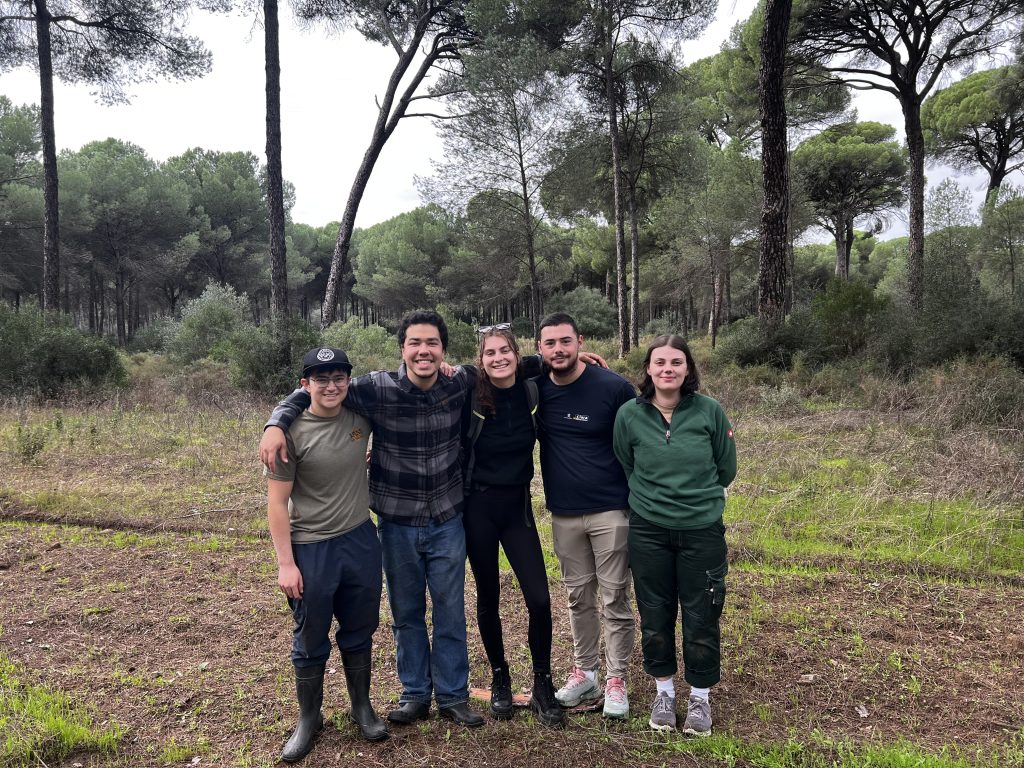

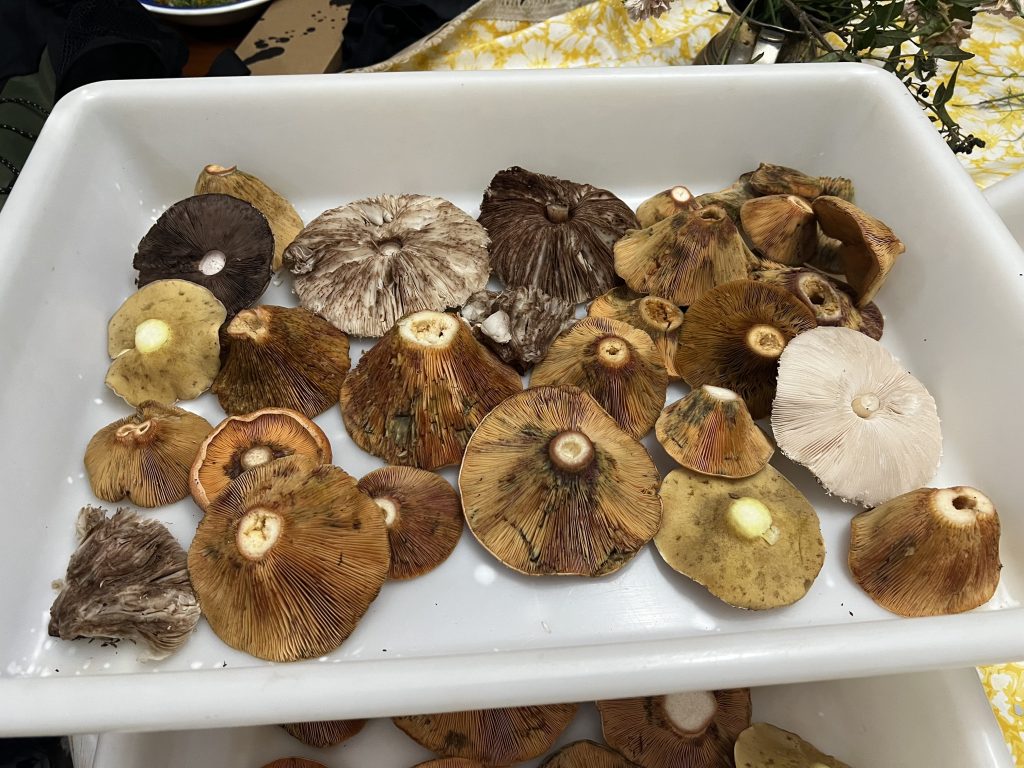
The Community
As a group, we mostly lived together in a house, creatively named the “WWOOFer House.” It was there that we cooked meals together, read and wrote in each other’s company, gathered around the fires I built each night, and created countless memories.
On Wednesday or Thursday nights, we all gathered in the main kitchen for the big meal. Together, we would choose a more elaborate recipe and commit to preparing it. Music played in the background as we sang, chatted, and cooked well into the night. Efficiency took a back seat; more often than not, we ended up eating at ten o’clock or later, but those moments of togetherness were priceless. Over the weeks at the farm, we prepared a series of dishes: eggplant parmigiana, fried zucchini flowers paired with a homemade romesco sauce; fried egg rolls, homemade cheesecake, and fresh lemon bread; mushroom tapenade, fried yuca, and fried egg wrapped in filo dough. The best part was that many of the ingredients came straight from our own harvest, including the mushrooms we foraged.
On Fridays, we cozied up in the WWOOFer House, built a big fire, and spent the evening cooking and playing games together. Victor, another WWOOFer, brought his Nintendo Switch, which was great for head-to-head games.

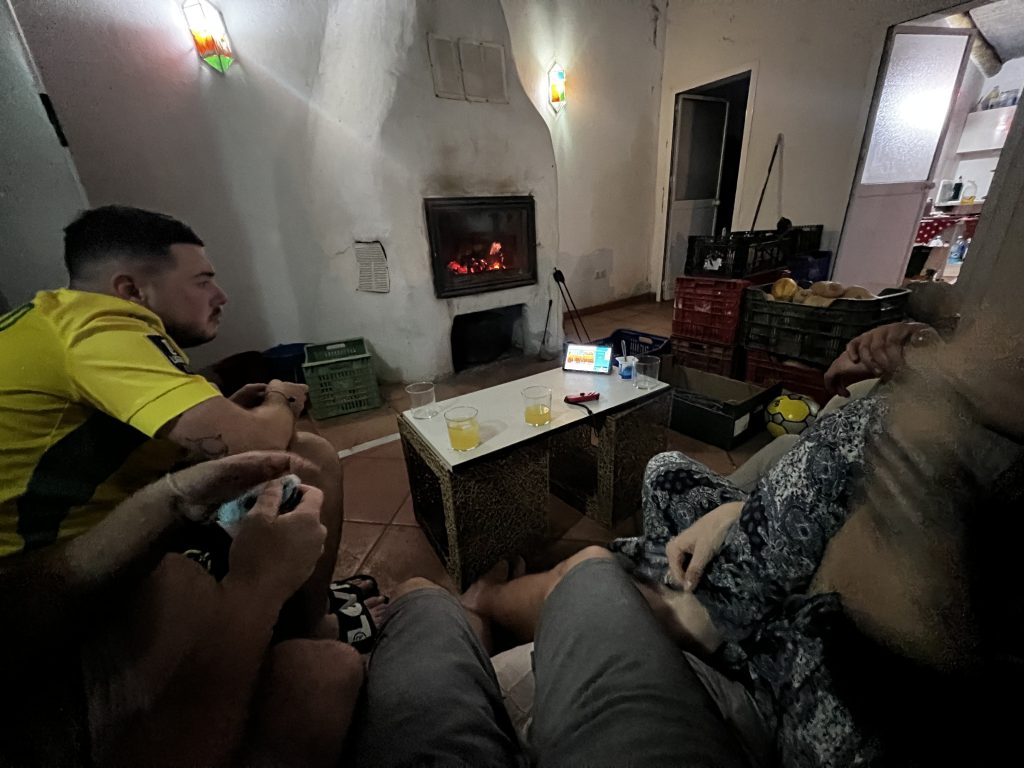
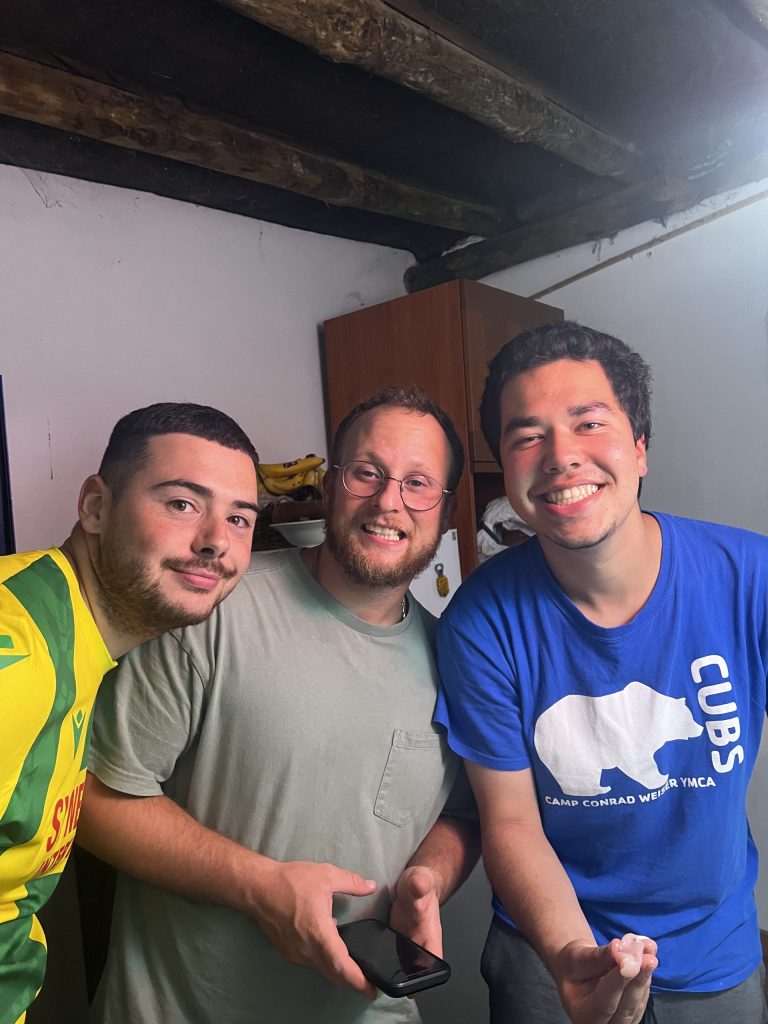
A Camp Reunion, Once Again
I have mentioned before that I enjoy spending time with fellow counselors from the camp where I work, and Seville provided me another opportunity to do just that. When the weekend arrived, I headed into the heart of the city and met up with my friend and fellow counselor, Alberto.
Being a native of Seville, Alberto gave me a historical lowdown of the city from the Torre del Oro, the place of alleged storage for gold from the Americas, to the Feria de Abril, a celebration of Andalusian culture. As the night fell upon us, he led me to a rooftop on top of El Corte Inglés, where we sat with a drink, facing the Catedral de Sevilla, a grand structure and the third largest cathedral in the world!
Having a local show me around granted me the option to explore hidden streets and rooftops that I otherwise would have missed.
After the tour, we returned to his homestay, where I had the pleasure of meeting his friends and parents, who graciously allowed me to spend the night. My time with Alberto and his circle provided a perfect opportunity to practice my Spanish and be humbled by the remarkable pace at which Spaniards speak. We all watched a soccer game and engaged in lighthearted discussions about Seville and everyday life. I only wish I could have stayed longer.
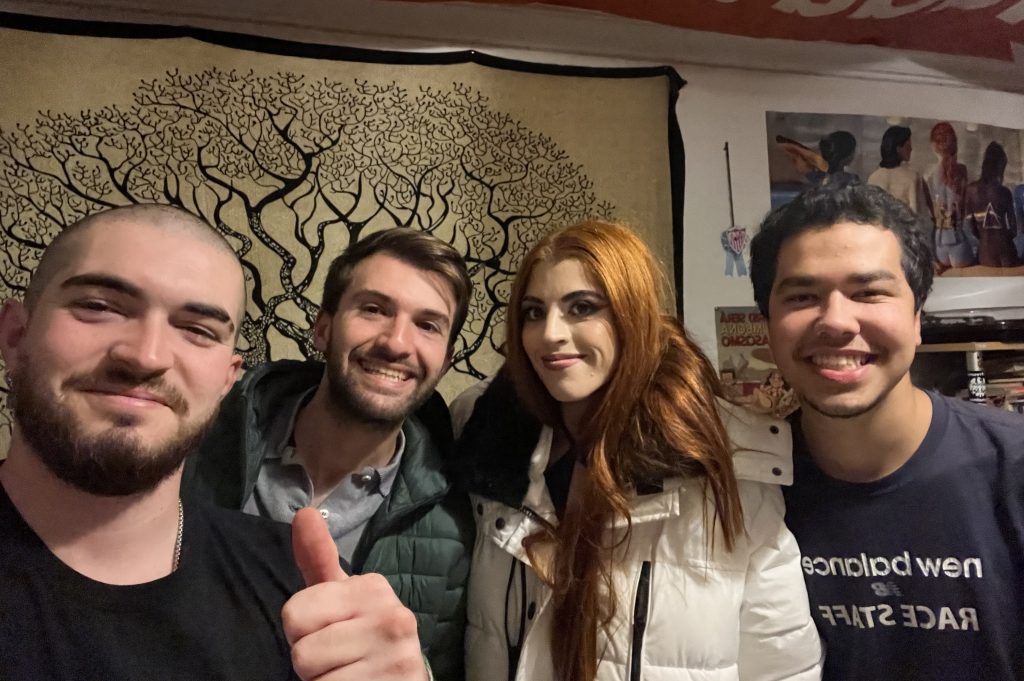
Portugal
Faro
After two weeks on the farm, I felt it was time to venture out for the weekend. Thanks to Seville’s accessible bus terminal, connecting to other countries was easy. The next morning, I left Alberto’s place and set off on a journey that brought me to Faro, a stunning coastal city in Portugal.
Faro’s calm, tranquil nature was a welcome change after all the hard work and travel. Visiting during the off-season meant the city was quiet, allowing me to wander its streets freely without the usual hustle and bustle. My first stop was the Igreja do Carmo Church, an awe-inspiring gold-lined building. Inside, I discovered the Capela dos Ossos, a hauntingly beautiful chapel adorned from floor to ceiling with human bones. After leaving the church, I strolled along Faro’s cobblestone streets, letting the peaceful atmosphere guide me deeper into the city center.
Another fascinating aspect of Faro was its Old Town, encircled by an oval-shaped wall that cuts through the city. With a history dating back to the Byzantine period, Faro reflects a blend of Roman, Moorish, and Portuguese influences visible in its structures. The wall, with nearly two thousand years of history, is an awe-inspiring remnant of the past. Inside, buildings like the Igreja de Santa Maria trace their origins back to the thirteenth century, merging medieval elements with later architectural influences. For a medium-sized town, Faro is exceedingly rich in history.
Given Faro’s position along the Atlantic, seafood is a staple of the local cuisine. As a lover of fish, I took advantage of this. For dinner, I wandered the streets until I came across O Chalavar, a seafood restaurant, where I enjoyed a freshly grilled selection of wild Atlantic fish, including cod, mackerel, and gilthead.

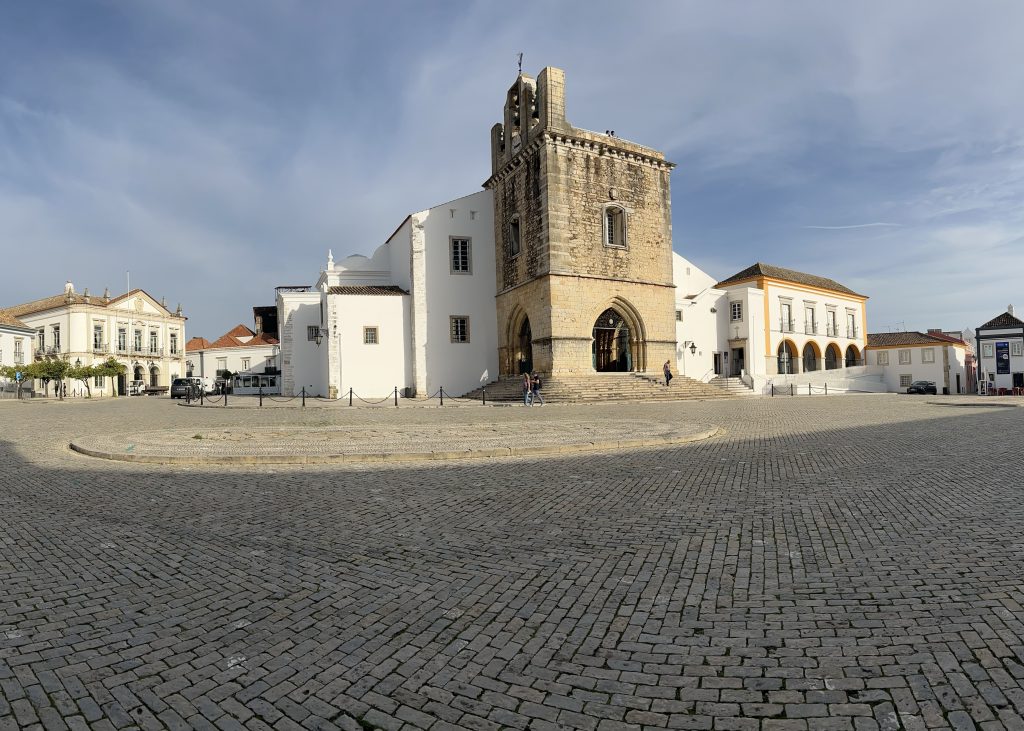
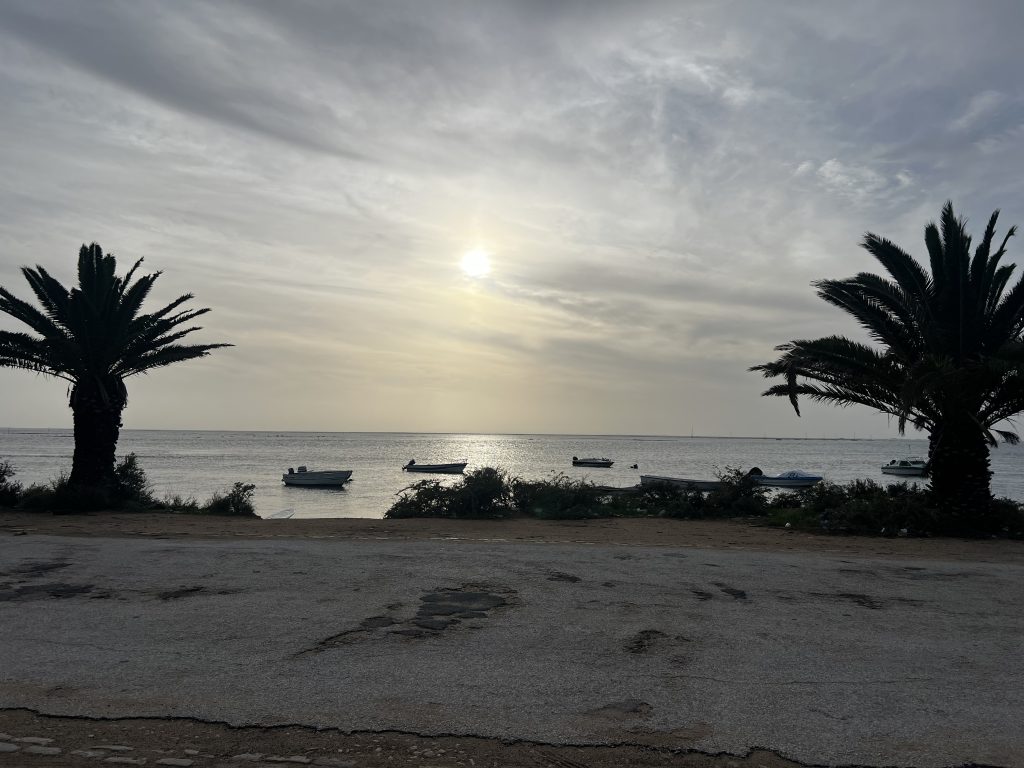
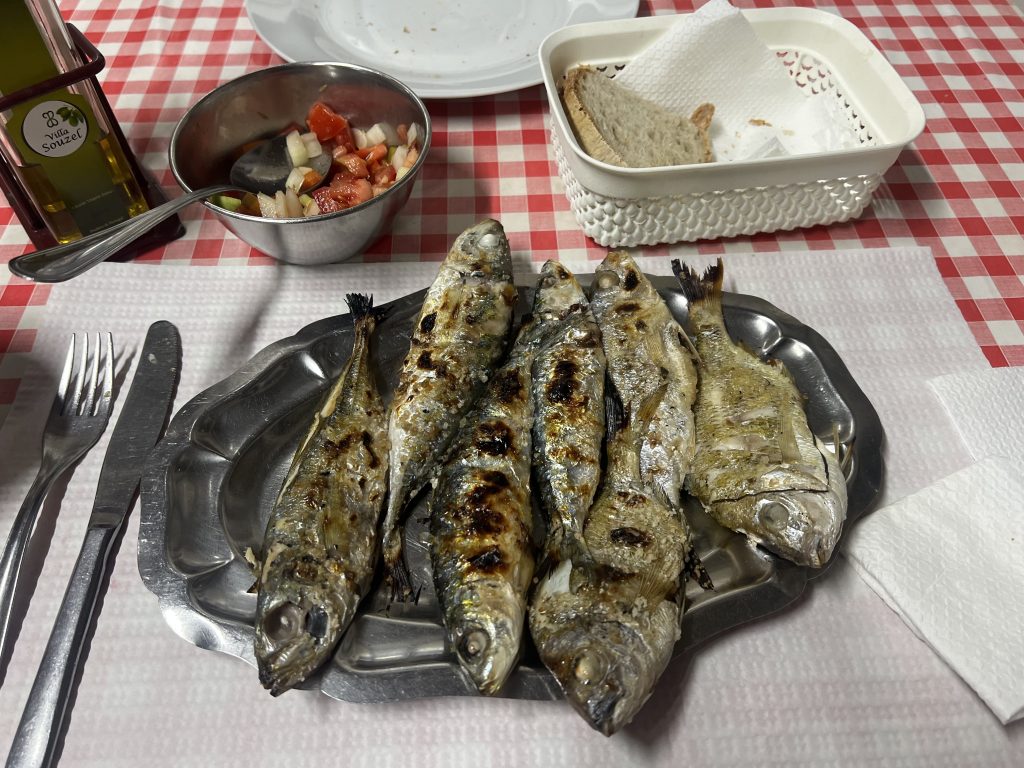
Lagoa
The following day, I took a tour to Lagoa, a coastal city on Portugal’s southern edge and part of the Algarve region. There, I had the opportunity to visit the Benagil Cave and Praia da Marinha while taking in breathtaking views of the Atlantic Ocean from its ridge. Along the way, I met Ania, a German student on a gap year much like myself. Passionate about photography, she and I spent time exploring the sites together, capturing photos and exchanging stories about our cultures.
The Benagil Cave was unlike anything I had ever seen, a natural wonder carved by the sea, with sunlight streaming in through its open dome to illuminate the waters below. At Praia da Marinha, I wandered along golden sands and admired the limestone cliffs, their jagged edges visibly weathered by centuries of ocean waves and winds. The vibrant contrast of the deep blue sea against the warm hues of the cliffs made it one of the most picturesque beaches I’ve ever visited. Standing on the ridge, looking out at the vastness of the Atlantic, I felt a sense of awe at the raw beauty of the scene.
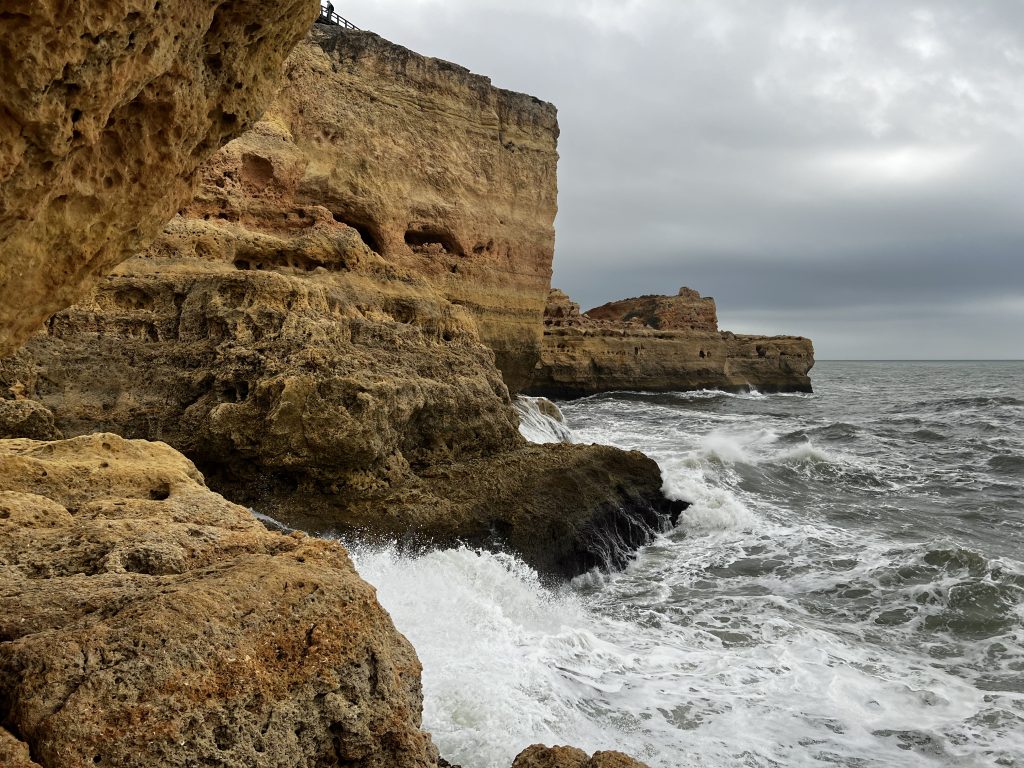
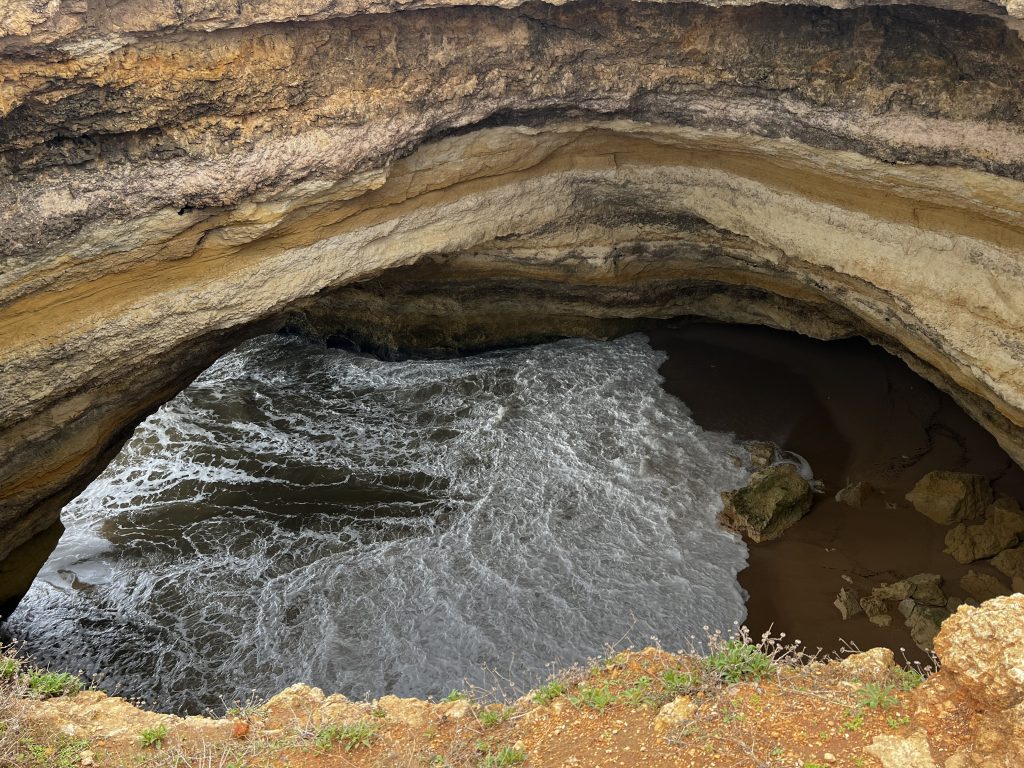


Sevilla: Hacienda El Garrotal Pt. 2
Returning to the farm at the end of the weekend for my final few days, I was struck by how much I missed it. Out of all the places I’ve visited, this experience truly stood out. The work, whether planting, harvesting, or simply spending time outdoors, gave me a newfound appreciation for the effort and dedication that goes into growing food. Every grocery trip and restaurant visit will now serve as a reminder of the hard work behind what’s on the shelf or on the plate.
My time on this farm wasn’t just about the daily tasks; it was about sharing meals, working side by side, and forming real, meaningful connections. There was something about the shared rhythm of farm life that brought us all together. The bonds I formed here feel lasting, and the sense of belonging is something I’ll always treasure.


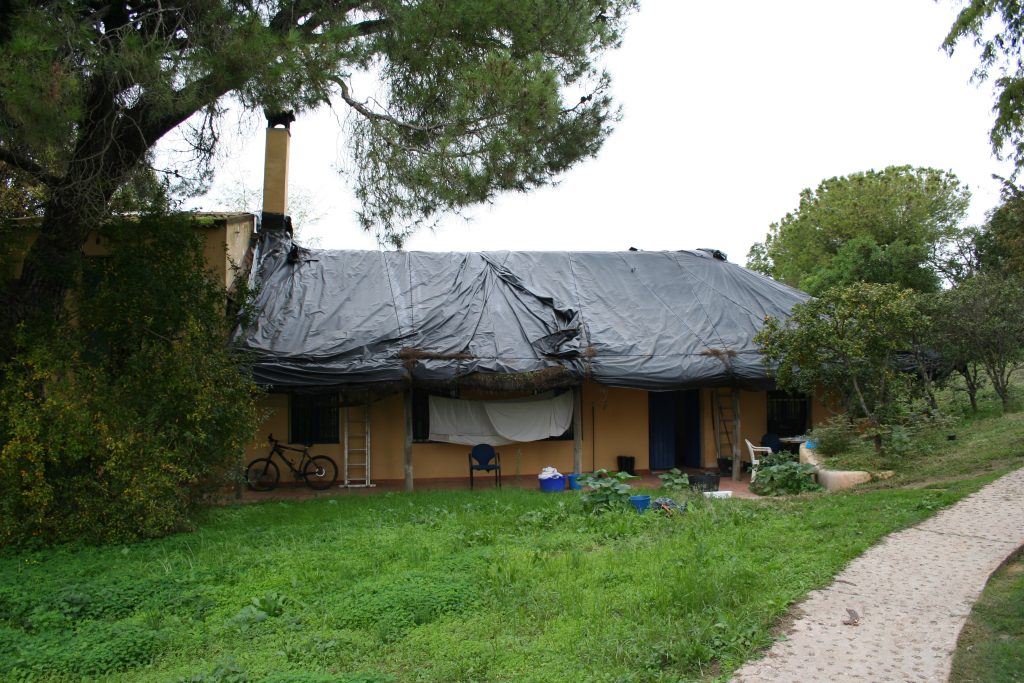

The Netherlands
Amsterdam
For the final stop in this European leg of my journey, I landed in the Netherlands, a destination that, despite a mere five-day visit, left quite a deep impression on me. After traveling throughout the busy streets of Barcelona, the historic neighborhoods of Faro, and the lively landscapes of Bilbao, Amsterdam offered a unique contrast: a calming, water-bound city that felt new, albeit comfortably familiar.
My residency in Amsterdam was unique. I lived on a boat, or “boatel,” secured along the Oosterdok. Waking up each morning to the lapping of water against the hull, I enjoyed my coffee and pastries with an unobstructed view of the Basiliek van de Heilige Nicolaas and the rows of Dutch homes beyond. The city, in transition for the holidays, shimmered with bright lights.
Quite famously, Holland is known for its tulips, but to be surrounded by them made me realize just how serious this nation is about its most iconic flower. Along the Singel Canal, I wandered through a collection of floating greenhouses, where vendors sold hundreds of varieties of tulips in every color, gradient, and style imaginable. The stalls overflowed with fresh bulbs, wooden tulip decorations, and countless gardening accessories.
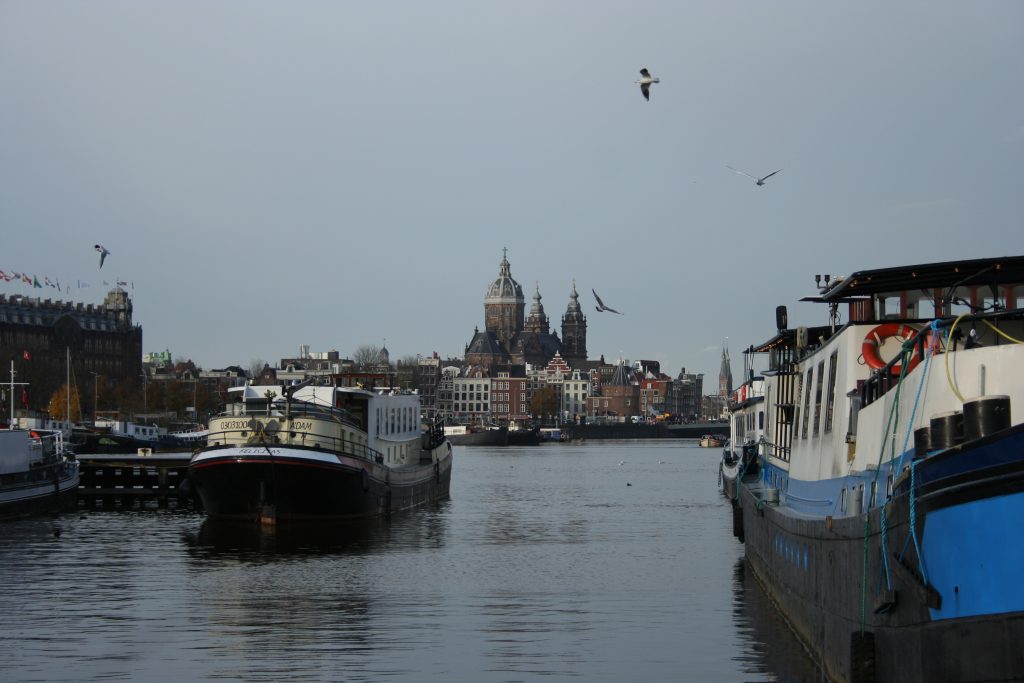

As I made my way through the city, it was impossible not to marvel at the Dutch architecture. The narrow brick canal homes, with their gabled facades and enormous windows, are an impressively efficient use of space. These buildings, coupled with Gothic cathedrals and Dutch Baroque, create a visual landscape of historical significance. Whether standing beneath the towering presence of the Rijksmuseum or walking along the houses that lined the canals, I found myself in constant amazement of the city’s beauty.
Beyond the sights, Amsterdam cuisine was quite enjoyable. I ate stroopwafels, warm and syrupy, each bite containing a caramel-like sweetness. I also made it a point to try traditional Dutch fare, which often ended up being Boerenkool, a hearty winter dish of mashed potatoes and kale served with smoked sausage. This meal felt especially fitting as I embraced the colder days leading up to the holiday season.
Living on the water, being surrounded by tulips, exploring new flavors, and walking historic streets, it all made me realize how much I had fallen for this city in such a short time. Amsterdam wasn’t just another stop on my journey; it felt like a place where I could see myself staying. My European adventure had taken me through farms, cities, mountains, and coastlines, but somehow, here, among the canals and bicycles, I felt an unexpected sense of belonging.
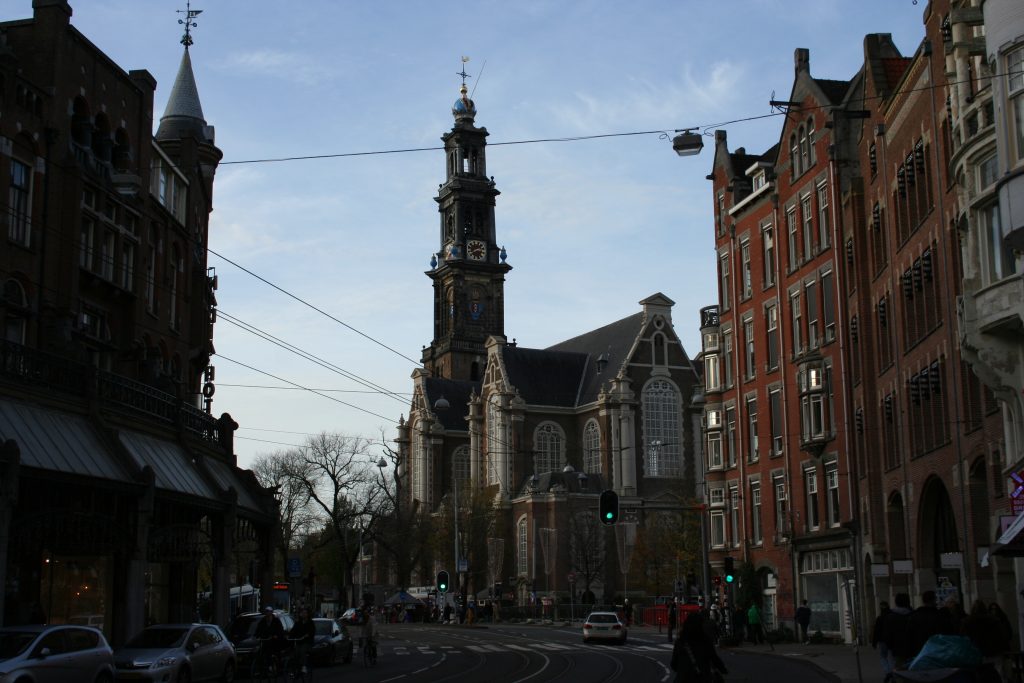
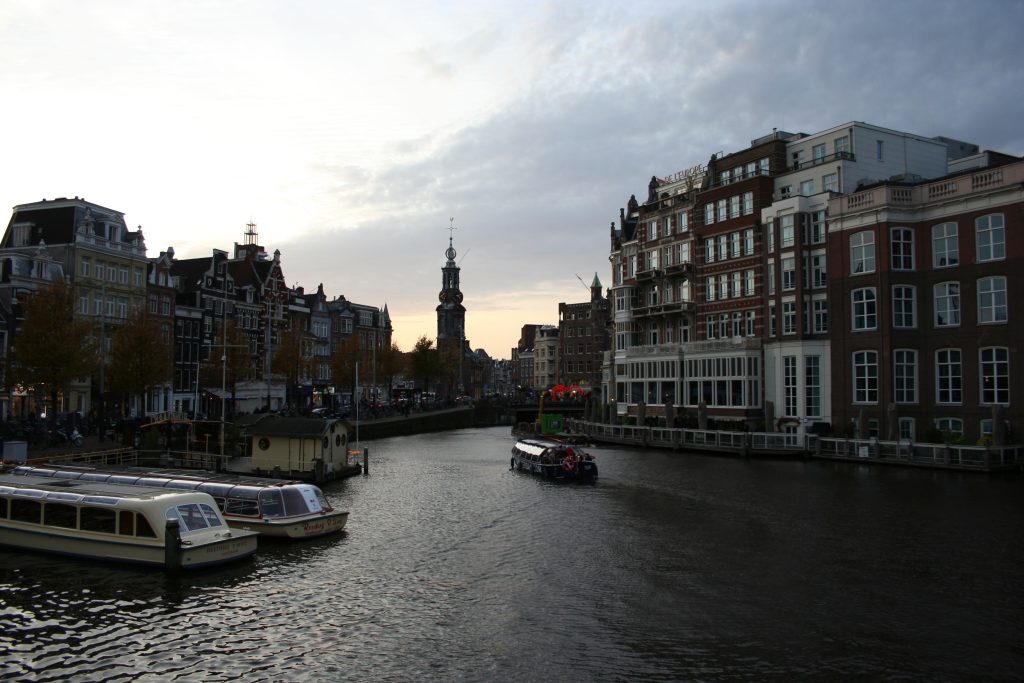
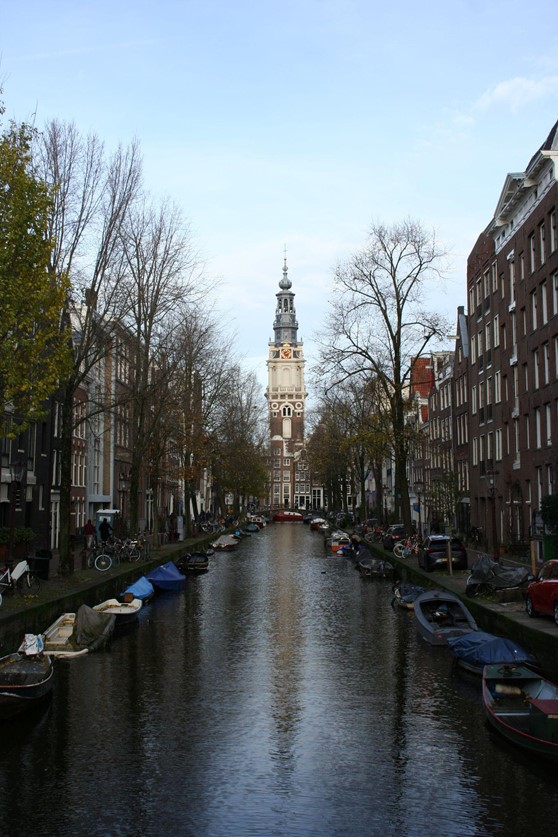
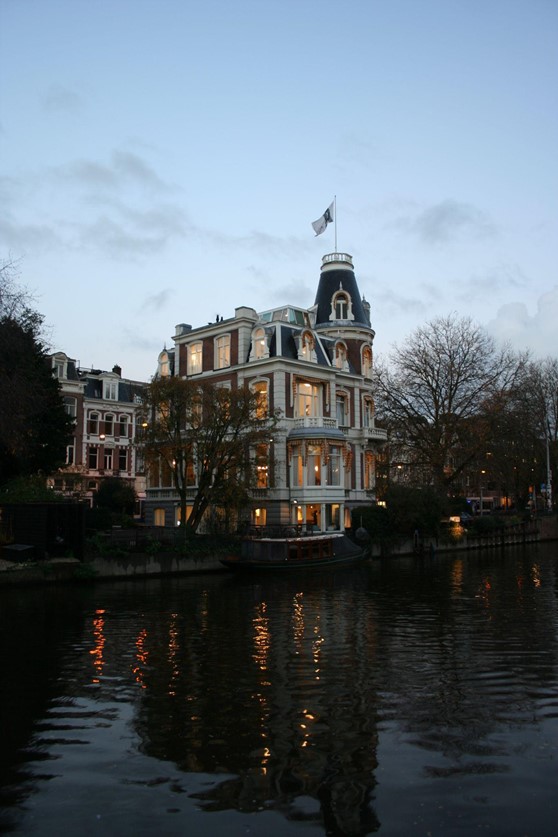
Rotterdam
As a student of history, I found it fitting to spend the day in a city with direct involvement in World War II. Due to a combination of Allied and German bombings, much of Rotterdam was destroyed a mere eighty years ago. Traveling from Amsterdam and passing through a collection of other traditional Dutch cities, I was shocked by how frequently modern buildings lined the streets. I quickly realized that rather than reconstructing what was lost, Rotterdam chose to move forward and embrace modernity.
Quirky is the only word in my vocabulary that can describe Rotterdam. I can’t say I have ever entered a city center—or any place, for that matter—to be greeted by cube-shaped homes standing on their corners, right next to a gigantic, colorful market hall whose walls are made of apartments and whose ceiling consists of offices. Even the city’s defining landmark, the Erasmus Bridge, was captivating with its combined cable-stayed and bascule design.
For all its modernity, Rotterdam still holds clear reminders of the past, especially in Delfshaven, an older borough with buildings dating back to the seventeenth century. In the west of the city, I wandered along the canals, admiring the more familiar Dutch architecture.
The versatility of Rotterdam is truly admirable, making my day trip one that I thoroughly enjoyed.
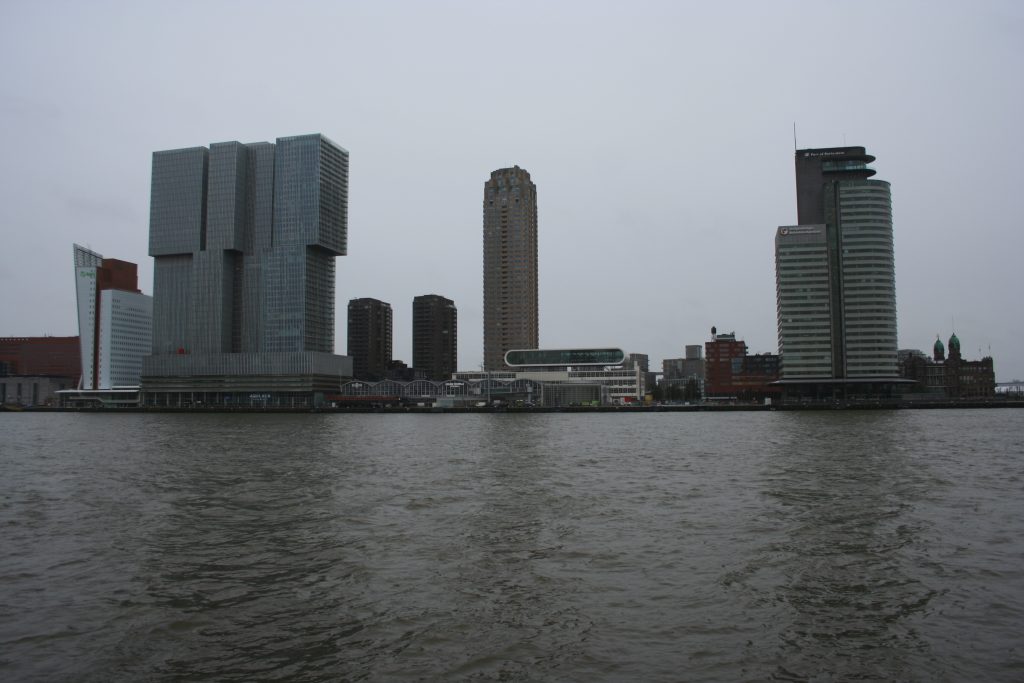


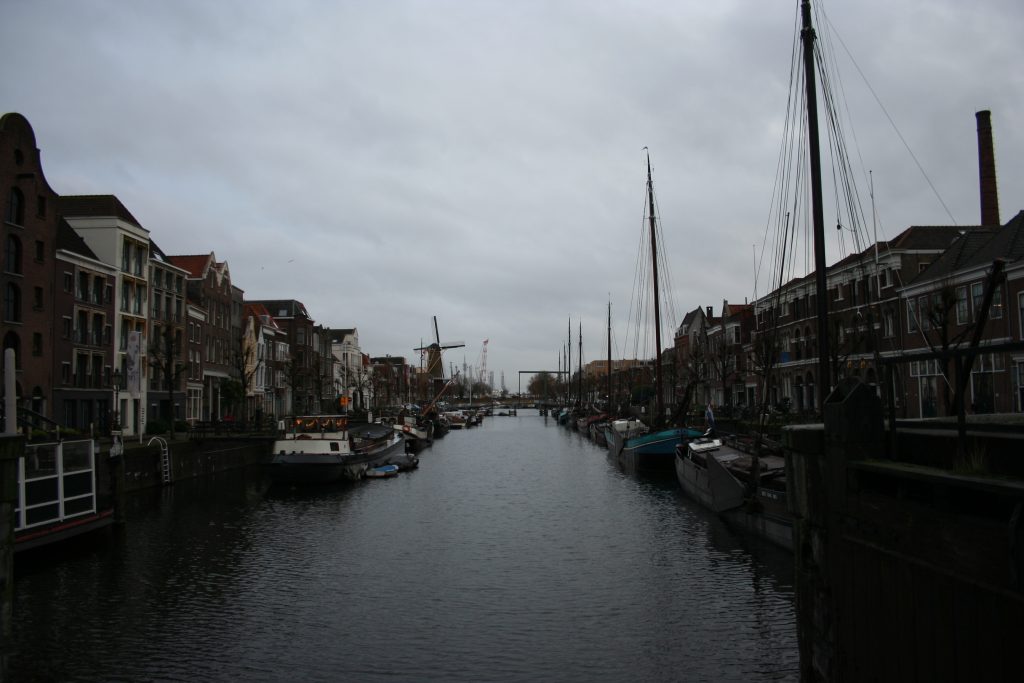
The Nighttime Tranquility
I loved Amsterdam’s nights. As the sun set, the people cleared, and the cold wind thrashed my face, I took lengthy strolls around the city’s edge. It became a tradition of mine to frequent Manneken Pis, a Dutch frites store, and consume my warm frites, a pleasurable contrast to the otherwise harsh weather.
Amsterdam’s illumination at night was magical. The Christmas lights lining homes and shops alike lit up the sidewalks with bright neon colors. Some of my favorite sights included the University of Amsterdam, ARTIS, and the Amstel River. It was a perfect time to reflect and appreciate the beautiful city surrounding me.


My stay in Europe had finally come to an end. I boarded a flight home to the US for a short stay during the year-end holidays.
